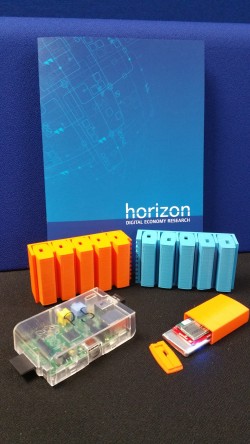Projects
3D Tune-In: 3D-games for tuning and learning about hearing aidst
Summary:
The challenge of 3D Tune-In is to facilitate the successful exploitation of existing, overlooked or neglected functionalities of hearing devices to optimise their potential and thus greatly improved people’s quality of life and their interactions with other people and their surrounding environment. Bringing together the relevant stakeholders from traditional gaming industries (Reactify, Vianet, XTeam, Nerlaska), academic institutes (imperial College London, De Montfort University, University of Nottingham, University of Malaga); a large European hearing aid manufacturer (GN Resound); and hearing communities through Associations (Extra Care, Hearing Link, Action Deafness, Accesibilidad y Personas Sordas, Ente Nazionale Sordi), 3D Tune-In will create a toolkit and different games tailored to different target audiences and contexts to help in the understanding of hearing loss and hearing aids.
HFRG members:
- Harshada “Ash” Patel
- Maddy Hallewell
- Mirabelle D’Cruz
- Richard Eastgate
- Sue Cobb
Project partners:
- Imperial College London (ICL) Project Coordinators
- De Montfort University, (UK)
- University of Malaga, Spain
- GN ReSound, Italy
- Reactify, UK
- Nerlaska, Spain
- XTEAM, Italy
- VIANET, Italy
Key contribution factors:
- Stakeholder engagement and elicitation of user requirements
- Evaluation and validation of game concepts
- User evaluation and validation of the technologies and apps
Publications:
- Eastgate, R., Picinali, L., Patel, H., & D´Cruz, M. (2016). 3D Games for Tuning and Learning About Hearing Aids. The Hearing Journal, 69 (4), 30-32 (link?)
- Picinali, L., D’Cruz, M. & Simone, L. (2015) 3D-Tune-In: the use of 3D visuals and sound to facilitate use of hearing devices. Conference paper at EuroVR 2015, Lecco, Italy, 15 – 16 October
- Picinali, L., D’Cruz, M. & Simone, L. (2015) 3D-Tune-In: the use of 3D visuals and sound to facilitate use of hearing devices. Poster and Demonstration paper at EuroVR 2016, Athens, Greece, 22 – 24 Nov [see ppt attached]
- Levtov, Y., Picinali, L., D'Cruz, M. & Simeone, L. (2016) 3D Tune-In: The Use of 3D Sound and Gamification to Aid Better Adoption of Hearing Aid Technologies. Conference paper at 140th Audio Engineering Society Convention. Paris, France, 4-7 June.
- Patel, H., Cobb, S., Hallewell, M., D'Cruz, M., Eastgate, R., Picinali, L., & Tamascelli, S. (2016, October). User involvement in design and application of virtual reality gamification to facilitate the use of hearing aids. In Interactive Technologies and Games (iTAG), 2016 International Conference on (pp. 77-81). IEEE. Link http://ieeexplore.ieee.org/abstract/document/7782518/
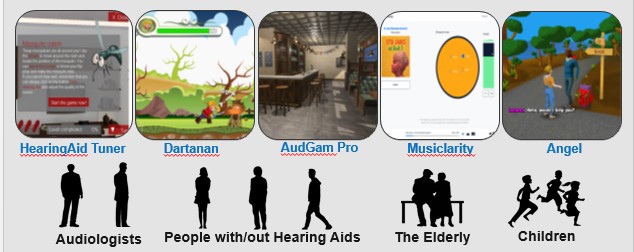
A model of hostile intent - Development of a model of hostile intent to pioneer the investigation of human pheromones in counter-terrorism
In order to test interventions aimed at detecting potential terrorist activity researchers need to develop and validate models of hostile intent. In a new way of looking at the problem, a major innovation in this project was the attempt to model a ‘low level’ terrorist behaviour. As such, a feasibility study was conducted which represented a significant departure from more theoretical perspectives.
The specific technology of interest is human chemo-signalling; a detection of subtle chemical changes in sweat. The study included a field study, a lab study and analysis of biological samples (sweat and saliva) including the use of Gas Chromatography Mass Spectroscopy (GCMS) analysis of sweat samples.
Chemo-signalling is well known in animal species and recent research has provided evidence that it may exist in humans. There is evidence for ‘the scent of fear’ but, until now, no research has been conducted on chemo-signals in hostile reconnaissance or suspect interrogation situations.
This feasibility study took a two-stage approach:
- Empirical laboratory study undertaken by University of Nottingham (led by Dr Alex Stedmon)
- Ecologically valid field study conducted at Salford University (led by Dr Peter Eachus)
One of the aims of the main research project was to develop a model of hostile intent and use it to pioneer the investigation of human pheromones in counter-terrorism. Data collected in the laboratory and field studies was then sent to Cardiff University (led by Prof Les Bailie) who provided world leading expertise in the detection and analysis of human stress pheromones.
Although the measurement and validation of human alarm pheromones as correlates of stress has been attempted elsewhere, this research represents the first instance in the context of terrorist research.
For more information email Dr Alex Stedmon.
Augmented Reality Navigation HMIs for vehicles
Summary:
This project is funded by a major vehicle manufacturer and is considering novel HMIs that can support the driver in navigation tasks. In particular, the project will investigate the use of Augmented Reality (AR) graphics presented via future wide field of view Head-Up Displays (HUDs). A number of driving simulator studies will be conducted addressing different aspects of the HMI design in which measures will be taken of navigational performance, visual/cognitive demand, driver acceptance, and so on. The work will directly inform the development of next generation navigation systems for vehicles.
HFRG members:
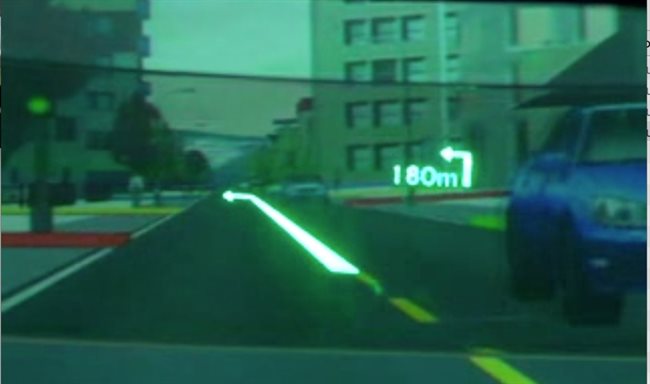
Analysing constraints to modal shift in rail transport - Using relevant stages from cognitive work analysis to identify constraints for modal shift to rail
Our partner ( University of Southampton) in this project is using relevant stages from cognitive work analysis to identify constraints for modal shift to rail.
We have selected a number of these constraints and will “bring these to life” (e.g. using storyboards and other techniques) to help participants in focus groups to imagine a future in which the barriers to modal change have been removed.
Conclusions will be drawn on whether the removal of the barriers could make people more likely to use the train in a range of different circumstances.
This project is funded by RRUK / EPSRC.
For more information, email Dr Brendan Ryan or Dr David Golightly.

CloudFlow - Aims to provide a Cloud Computing infrastructure that allows SME software vendors to offer current and future customers new cloud services across the engineering and manufacturing chai
Title: CloudFlow: Computational Cloud Services and Workflows for Agile Engineering
Funder: European Commission Framework Programme 7 (NMP-ICT-FOF-609100)
Total value: €8,788,949
Start to end date: July 2013 – December 2016
Summary:
CloudFlow the ambition to provide a Cloud Computing infrastructure based on existing technology and standards that allows SME software vendors to offer current and future customers (being it SME or bigger companies) new cloud services along and across the engineering and manufacturing chain - even vendor independent. CloudFlow covers Computer Aided Design and Manufacturing (CAD/CAM), Computer Aided Engineering (CAE), especially. Computational Fluid Dynamics (CFD) including pre- and post-processing, simulation of mechatronic systems (Functional Digital Mock-Up – FDMU) and Product Lifecycle Management (PLM) including data archival.
Key publications:
Borsci, S., Lawson, G. and Broome, S. (2015) Empirical evidence, evaluation criteria and challenges for the effectiveness of virtual and mixed reality tools for training operators of car service maintenance. Computers in Industry, Volume 67, February, 2015, pp 17 -26 ( http://www.sciencedirect.com/science/article/pii/S0166361514002073)
Cloudflow
European Commission: Computational Cloud Services and Workflows for Agile Engineering

Cloud Manufacturing
Title: Cloud Manufacturing
Funder: EPSRC
Summary:
UK economic prosperity increasingly depends on maintaining and further developing a resilient and sustainable manufacturing sector that is based on sophisticated technologies, relevant knowledge and manufacturing framework, that has the ability to produce a variety of products faster, better and more affordable. High labour cost economies will require an infrastructure that can quickly respond to consumer and producer requirements, that will minimise the use of materials, energy, transport and resources while maximising environmental sustainability, safety and economic competitiveness.
We address these needs with a research programme centred on the concept of ‘Cloud Manufacturing’. The programme is a radical departure from the current philosophy of manufacturing ICT – it creates a framework for manufacturing entities to participate and contribute information and support services to the consumers and the users of the products.
The role of Human Factors within the Cloud Manufacturing project is to understand the requirements for user-centred design within this new paradigm. This includes understanding effective decision support within highly distributed manufacturing supply chains, HMIs for envisioning the matching of products to cloud manufacturing services, and new models of collaboration.
HFRG members:
Project partners:
Key publications:
Golightly, D., Sharples, S., Patel, H., & Ratchev, S. (2016) Manufacturing in the Cloud: A human factors perspective. International Journal of Industrial Ergonomics, 55, 12-21.
Golightly, D., Sanderson, D., Holmes, P., Ratchev, S., Sharples, S. Design requirements for effective hybrid decision making with Evolvable Assembly Systems. European Conference on Cognitive Ergonomics, 2016.
- Decision Making in Railway Signallers - Aims to understand and develop a framework capable of representing Signaller decision making
Network Rail were keen to understand, and develop a framework capable of representing Signaller decision making. This will inform future automation, system design and training of Signallers. This work has involved a literature review of the theory behind decision making and applied this knowledge to interpret interviews completed with signallers. The work to date has suggested a framework that reflects naturalistic decision making theory which will require future validation during future work.
For more information, email Dr Laura Pickup.
Evolvable Assembly Systems
Title: Evolvable Assembly Systems
Funder: EPSRC
Summary:
Assembly of final products in sectors such as automotive, aerospace, pharmaceutical and medical industries is a key production process in high labour cost areas such as the UK. To respond to current challenges manufacturers need to transform current capital-intensive assembly lines into smart systems that can react to external and internal changes. There is a need for a radically new approach toward development of future assembly systems able to continuously evolve in order to respond to changes in product requirements.
The research delivers a new pattern shift in adaptable and cost effective manufacture that breaks with traditional approaches and is affirmed of the following foundational research challenges:
- Product-Process System Evolution
- Data Analytics; Knowledge Modelling
- Emergence Engineering
- Open Manufacturing
The contribution of Human Factors within this project is to understand how automation and decision-support in an evolvable assembly environment can be delivered in user-centred manner to deliver high performance collaboration between humans and automation/robotics.
EPSRC Evolvable Assembly Systems - Institute for Advanced Manufacturing
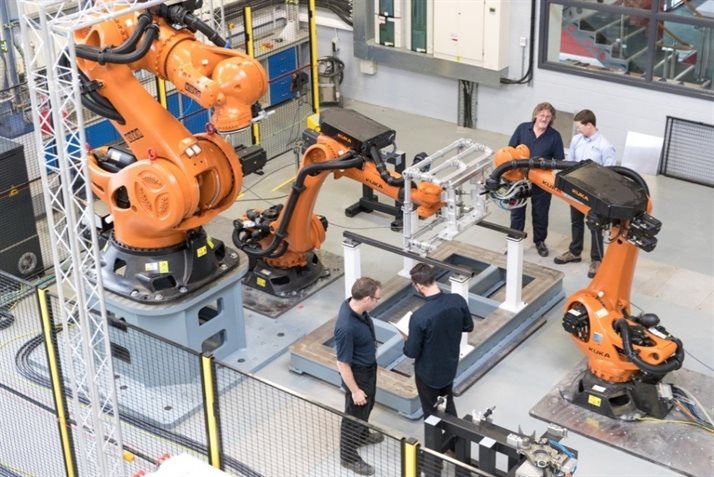
HINTS - Human Integration with Navigable Taxiway Sequencing
Title: Human Integration with Navigable Taxiway Sequencing (HINTS)
Summary:
The European airspace is experiencing an increase in demand for its capacity, and forecasts predict that flight demand will grow 1.5 times between 2012 and 2035 (SESAR, 2015). As more flights take to the sky, capacity is also becoming constrained in airports at ground level. Optimal routing of aircraft throughout an airport requires an air traffic controller (ATCO) to consider the needs of multiple aircraft concurrently, potentially increasing workload and cognitive demands. However, while human operators can only consider a limited number of traffic routing combinations, optimization-based decision support systems may overcome this limitation and provide guidance on optimal routes and schedules.
HINTS investigates the role of optimization-based decision support technology in ATCO decision making and performance, drawing upon perspectives in human factors, operations research, and geospatial positioning. The primary aim is to develop a decision support tool for directing aircraft taxiway movements that also reduces workload and enhances situation awareness for end users.
HFRG members:
Project partners:
- Jason Atkin, Computer Science, University of Nottingham
- Geert de Maere, Computer Science, University of Nottingham
- Terry Moore, Nottingham Geospatial Institute, University of Nottingham
- Herve Morvan, Institute for Aerospace Technology, University of Nottingham
Institute for Aerospace Technology
eATM Portal
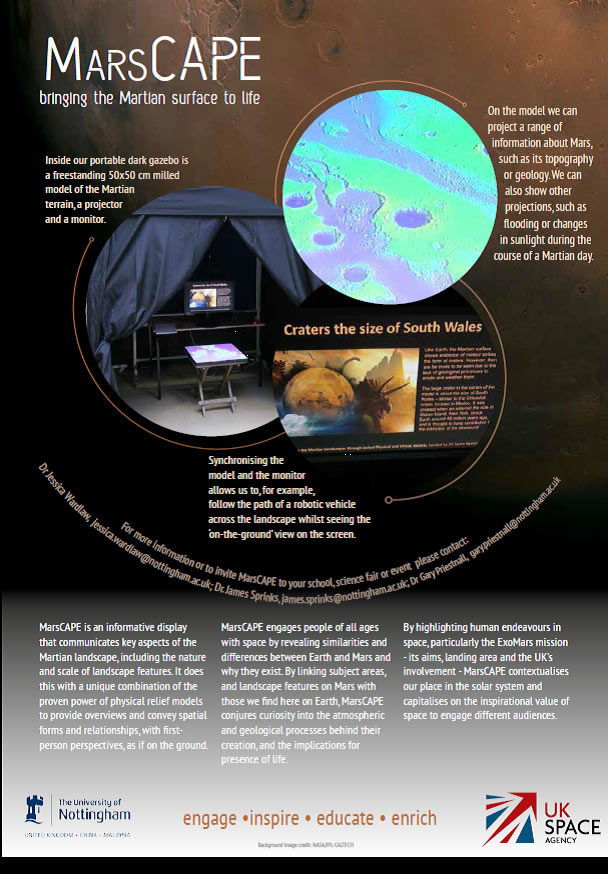
HMI Design for Highly Automated Driving
Summary:
This project is funded by a major vehicle manufacturer and is considering how to design the HMI for future highly automated driving to allow the ‘driver’ to seamlessly resume control of his/her vehicle in a range of different scenarios. A number of driving simulator studies will be conducted with over 60 participants investigating varying HMI configurations. As part of the work, we are also aiming to understand what measures are particularly relevant to the resumption of driving, such as the physical interaction with primary controls, posture changes, speed profiles, eye movements, physiological markers, and so on.
HFRG members:
Prospect
Horizon

Horizon Digital Economy Research represents an initial £40 million investment by Research Councils UK (RCUK), the University of Nottingham and over 40 academic and industrial partners including the Human Factors Research Group (HFRG).
Horizon focuses on the role of ‘always on, always with you’ ubiquitous computing technology in the Digital Economy. Building on the Digital Britain plan, Horizon are investigating the technical developments needed if electronic information is to be controlled, managed and harnessed to develop new products and services for societal benefit.
The advent of the Digital Economy poses interesting new challenges to human factors theory and practice. These include coping with the intermingling of the digital and physical domains as sensors and personal devices turn real-world action and virtual interaction into data.
Termed a ‘personal contextual footprint’, this trail can be harnessed to provide personalised services but privacy implications for the individual also have to be understood.
We are also interested in exploring new ways of collaboratively performing tasks through activities such as crowd sourcing and understanding the role of human error in data security.
The HFRG are currently involved in a range of Horizon projects:
- Enabling car sharing through mobile devices
- Integrating personal data about travellers into transport management
- Designing interfaces for digital GIS systems to provide ‘door to door’ personal navigation
- Use of mobile smart phones featuring accelerometers in the detection of car accident
For more information, visit the Horizon website or email Dr Sarah Sharples.
Human-Machine Interface design for vehicles - Aims to understand the relative benefits of traditional resistive touchscreens in vehicles versus capacitive touchscreens
A range of devices could be potentially be used by drivers (and passengers) to access the increasing range of functionality on offer within vehicles (touchscreens, rotary controllers, steering wheel controls, touchpads, etc.).
This project aims to:
- Understand the relative benefits of traditional resistive touchscreens in vehicles (which are activated by finger pressure) versus capacitive touchscreens (activated by skin conductance)
- Compare a range of devices both singly and in combination. This will enable an understanding of the level of distraction for each device, as well as the potential use of pairings of devices for different components of a secondary task.
The project will utilise the Human Factors driving simulator to investigate research questions in a safe, controlled and cost-effective environment.
This project is sponsored by a major vehicle manufacturer (September 2011-September 2012). For more information, email Dr Gary Burnett.
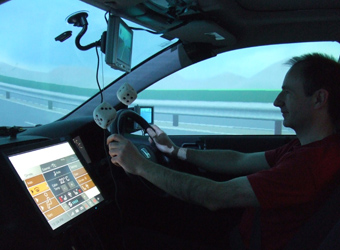
Human factors in rail engineering - The programme of work is helping to develop an understanding of the key challenges and priorities for human factors in rail engineering work
A programme of work has been carried out with Network Rail to support a number of high profile projects in rail engineering and maintenance, in particular to support the evaluation of current and new ways in which engineering work is protected on the UK railway.
A range of human factors methods have been applied, including:
- the collection of information in site observations
- consultation and scenario based work with staff and industry experts
- analysis of functions in rail engineering
- identification and analysis of human factors risks
- integration of human factors with other business processes (e.g. safety, production)
The programme of work is helping to develop an understanding of the key challenges and priorities for human factors in rail engineering work.
For more information about this project, email Dr Brendan Ryan.
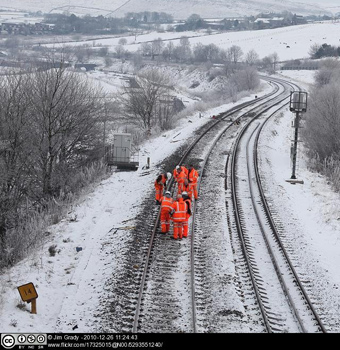
i-Motors
Summary:
i-Motors is a 2 year Innovate UK project funded under the first call of the Connected and Autonomous Vehicle programme. The project is aiming to develop a vehicular cloud computing platform that fuses data from road vehicles with ancillary information relating to the road environment. Within the Human Factors group, we are conducting research related to the key trust and usability issues that will effect drivers’ acceptance of the novel information and services that will arise from the different communication streams. This will include focus groups with drivers considering opinions on driver to driver communications, tasks analyses on future driving, and a series of formative driving simulator studies aiming to develop HMIs for new information/services with maximum trust/acceptance and minimum distraction.
HFRG members:
i-Motors
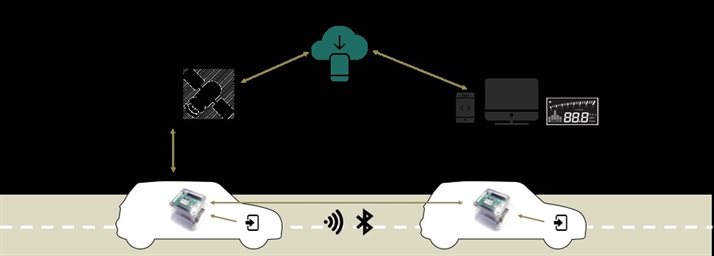
- Identification and analysis of human functions and safety relevant activities in rail - Aims to provide a framework to clarify the contributions of people in a range of railway roles
This work is being carried out on behalf of the European Rail Agency and will provide a framework to clarify the contributions of people in a wide range of railway roles.
Outputs from this project will help with setting the agenda for future rail human factors research for the Agency.
For further information, please contact Dr. Brendan Ryan.
iMars - Analysis of Mars multi-resolution images using auto-coregistration, data mining and crowd source techniques
Title: iMars: Analysis of Mars multi-resolution images using auto-coregistration, data mining and crowd source techniques
Funder: European Project Framework Programme 7 (FP7 607379)
Total value: €2,014,171
Start to end date: December 2013 – March 2017
Summary:
The iMars project is applying the latest Big Data mining techniques to images captured of the surface of Mars over the last 40 years, so that they can be used to compute and classify changes in geological features. Images of the Martian surface reveal changes in features like sand dunes, dust devils, gullies and meteorite impact craters that further our understanding of the climate and geology of the planet. The Nottingham team is developing a Citizen Science platform, ‘Mars in Motion’, which will be used to both train and validate a computer algorithm to detect changes. Volunteers are asked to ‘spot-the-difference’ between two images, taken at different times, of locations where the algorithm thinks there has been change. Volunteers’ annotations on the images are aggregated until they reach a consensus, when their data will then be fed back to Planetary Scientists on the internet to inform future missions and research.
Project partners:
- University of Nottingham - Dr Steven Bamford and Professor Stuart Marsh
- University College London Mullard Space Science Laboratory (MSSL)
- Freie Universität Berlin (FUB)
- Deutsche Zentrum für Luft- und Raumfahrt (German Aerospace Centre/DLR)
- École Polytechnique Fedérale de Lausanne; University of Seoul.
Key publications:
- HOUGHTON, RJ, WARDLAW, J, SPRINKS, J, GIORDANO, M, BAMFORD, S and MARSH, S, 2016. Martian Factors: A systems ergonomics approach to citizen science In: Human Factors In Complex Systems 2016.
- MULLER, J. P., TAO, Y., SIDIROPOULOS, P., GWINNER, K., WILLNER, K., FANARA, L., WAEHLISCH, M., VAN GASSELT, S., WALTER, S., STEIKERT, R., SCHREINER, B., IVANOV, A., CANTINI, F., WARDLAW, J., MORLEY, J., SPRINKS, J., GIORDANO, M., MARSH, S., KIM, J., HOUGHTON, R. and BAMFORD, S., 2016. EU-FP7-IMARS: Analysis of Mars multi-resolution images using auto-coregistration, data mining and crowd source techniques: Processed results - A first look
- SPRINKS, J, WARDLAW, J, HOUGHTON, RJ, BAMFORD, S and MARSH, S, 2016. Better the Martian you know?: Trust in the crowd vs. trust in the machine when using a Martian Citizen Science platform In: 11th European Planetary Science Congress (EPSC).
- WARDLAW, J, SPRINKS, J, HOUGHTON, RJ, BAMFORD, S, MARSH, S, MULLER, J-P and SIDIRPOULOS, P, 2016. Mars in Motion: An online Citizen Science platform looking for changes on the surface of Mars In: 11th European Planetary Science Congress (EPSC)
- MULLER, J-P, SIDIRPOULOS, P, TAO, Y, WILLNER, K, WAEHLISCH, M, WALTER, S, SCHREINER, B, STEIKERT, R, IVANOV, A, CANTINI, F, SPRINKS, J, GIORDANO, M, KIM, J, HOUGHTON, RJ and BAMFORD, S, 2016. EU-FP7-iMARS: Analysis of Mars multi-resolution images using auto-coregistration, data mining and crowd source techniques: A Status Report. In: 11th European Planetary Science Congress (EPSC)
- SPRINKS, J, HOUGHTON, RJ, BAMFORD, S and MORLEY, J, 2015. Citizen science: The importance of being needed and not wasted In: The ACM SIGCHI Annual Symposium on Computer-Human Interaction in Play (CHI PLAY 2015).
- WARDLAW, J, SPRINKS, J, HOUGHTON, RJ, BAMFORD, S, MORLEY, J and MARSH, S, 2015. iMars: Crowd-sourced analysis of imagery for geological change on Mars. In: GRSG 26th Annual Conference "Challenges in Geological Remote Sensing", Frascati, Italy.
- MULLER, J-P, GWINNER, K, VAN GESSELT, S, IVANOV, A, MORLEY, J, HOUGHTON, RJ, BAMFORD, S, YERSHOV, V, SIDIRPOULOS, P and KIM, J, 2014. EU-FP7-iMars: Analysis of Mars Multi-Resolution Images using Auto-Coregistration, Data Mining and Crowd Source Techniques: An overview and a request for scientific inputs In: Geophysical Research Abstracts. 16. EGU2014-13744
i-Mars
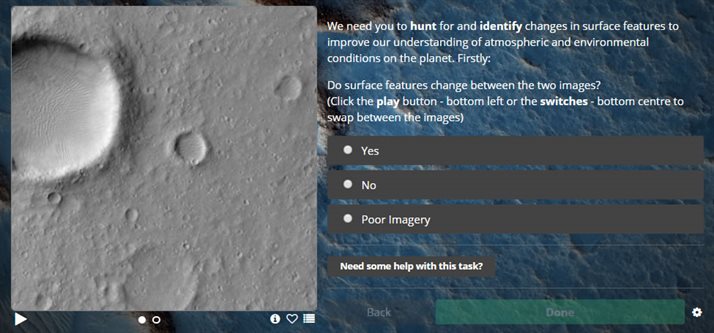
IMPETUS – Intelligent Mobility Project

Funder: Transport Systems Catapult and University of Nottingham, UK
Value: £359,185
Date: October 2014 - September 2017
Summary:
A collaborative project between the University of Nottingham and the University of Leicester, to support the Transport System Catapult’s work in the area of ‘Intelligent Mobility’, the smart, green, more efficient movement of people and goods.
IMPETUS is a 3 year project, launched in October 2014 and continues to deliver a programme of activities focusing on the key themes of ‘End to End Journeys’; ‘Autonomous Transport Systems’; Modelling and Visualisation’ and ‘Information Exploitation’. Activities include a variety of academic placements e.g. the analysis of Twitter data (sentiment analysis) during rail disruption and understanding air quality issues in urban areas using GIS, open source and emissions data, to PhD internships exploring ‘trust in autonomous’.
IMPETUS online brochure
IMPETUS at Nottingham
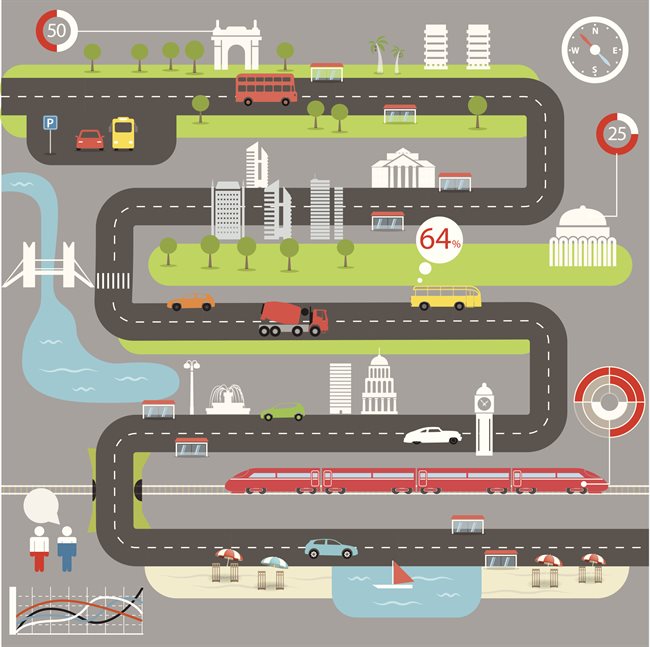
Intra and intercampus mobility
Funder: N-SERP-Nottingham Summer Engineering Research Programme
Value: £7,500
Date: June 2016 - August 2016
Summary:
3 undergraduate summer placements were funded by IMPETUS, to examine various aspects of intra and inter campus mobility from the perspective of staff, students and visitors. Projects ran from June to September 2016, (10 weeks) and culminated in a short report and a poster. E.g.
- Identifying Intercampus staff movement and travel modes
- Intercampus travel (Hopper bus) and student movement
- Smart Campus – identifying UoN Open Day visitor movement
Further projects are proposed this summer to develop and extend this work.
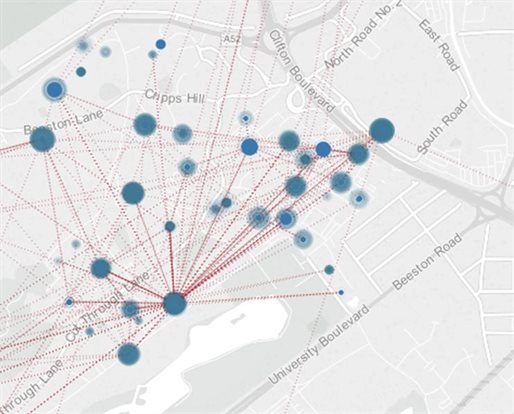
MaTHiSiS - Managing Affective Learning Through Intelligent Atoms and Smart Interactions
Project duration: 2016-2019
Sponsor: EU H2020 ICT-20-2015 Technologies for better human learning and teaching
Budget: €7.6 Million

Summary:
Mathisis aims to assist the educational process for learners and their tutors and caregivers by creating a novel and continuously adaptable "robot/machine/computer"-human interaction ecosystem to enhance vocational training, workplace learning and mainstream education for learners. The novelty of the MaTHiSiS system is that it will learn from student behaviour and feedback to adapt selection of new learning material suited to the individual learner. Making use of shared knowledge within the system to support new methodologies in adaptive learning technology. Use case examples will be evaluated for a variety of target learner groups including; mainstream education, education for people within the autistic spectrum, profound and multiple learning disabilities cases and workplace-oriented activities.
HFRG members:
- Sue Cobb
- Marisé Galvez Trigo
- Penny Standen (School of Medicine)
Project partners:
- ATOS, SPAIN - Project Coordinator
- DIGINEXT SARL, France
- Centre for Research and Technology Hellas (CERTH), Greece
- National Center for Scientific Research “Demokritos” (NCSR “Demokritos”), Greece
- Nottingham Trent University, UK
- The University of East London (UEL), UK
- Maastricht University (UM), Netherlands
- Vrije Universiteit Brussel (VUB), Belgium
- Fondazione Mondo Digitale, Italy
- IMOTEC, Lithuania
- La Cometa del Sud, Italy
- Nurogames GmbH, Germany
- General Directorate of Educational Innovation and Teacher Training, Spain
- EOPPEP is the National Organization for the Certification of Qualifications and Vocational Guidance, Greece
- Europole, Italy
- Aerospace Valley (AV), France
- OTE Academy, Greece
MaTHiSiS website
Optimisation of possession authorisation requirements through the use of lean systems design and communication technologies
This study aims to evaluate the current communication arrangements for the authorisation and control of possessions for engineering works, in order to identify opportunities for more effective procedures through a lean systems design approach, combined with human factors evaluation, and the potential for the introduction of new communication technology.
As the rail industry moves towards operating a 24/7 railway the time taken out to complete maintenance and project works is at a premium. It is therefore essential that any waste or delays incurred whilst taking possession of the line are eliminated, thus maximising the time for the engineering activity to be completed or releasing time for the safe operation of trains. However, maintaining protection for the safety of the workforce remains paramount.
Lean systems design has been successfully implemented across a number of industry and service sectors to improve productivity and response times e.g. manufacturing, defence, retail, automotive and aerospace industries. Lean focuses on simplifying the process and applying technology where it is required to make an effective contribution towards quality and/or the end to end process time. This approach will identify opportunities for process simplification and the use of communications technology to apply a mindset of quick response to the safety critical possession authorisation communication process whilst ensuring that workforce and system safety is not compromised.
This study is funded by the RRUK-A and is partnered by the University of Nottingham, Coventry University, 3TC and Network Rail.
For more information, please contact Shelley Stiles.
PARM and Pavlopetri
Title: PARM and Pavlopetri
Funder: Heritage and the Digital Research Priority Area, The University of Nottingham
Total value: £10,000
Start to end date: 2016
Summary:
A feasibility study looking at representing 3D data from an underwater archaeological survey of the ancient Greek town of Pavlopetri, on Projected Augmented Relief Models (PARM). The data had previously been used in a digital 3D reconstruction of the town but no physical model had been built. PARM had previously been used to represent existing terrestrial landscapes, but not for underwater or archaeological remains. The resultant model was further augmented with tablet based reconstructions of some of the buildings of the town.
Project partners:
- Ain Shams University
- Alexandrina University
Underwater Archaeology Research Centre
Participatory design of 3D Educational Virtual Environments
Summary:
Virtual Environments can be powerful tools in supporting education. They allow unique fidelity of representation and learner interaction, providing users with experiences that are not possible in the real world. The ability to display and also to interact with 3D models can support learning about abstract concepts that are traditionally difficult to teach, while the use of immersive technologies can be highly engaging and can motivate learners.
However, Educational Virtual Environments (EVEs) can be difficult to design and there is insufficient guidance available in the literature. The creation of 3D prototypes is often difficult, costly and time-consuming, and therefore 3D features are often not considered until late in the development process when many critical design decisions have already been made. Additionally, it is critical that educators and other relevant stakeholders and involved in the design process to ensure that the applications produced effectively meet learning objectives, yet it can be difficult for non-technical design partners to understand the affordances and capabilities of EVE technologies. The combination of complex development issues means that it is difficult to design educational EVE applications that are useful, usable and effective.
Across a broad range of educational contexts, HFRG have investigated tools and methods to facilitate the involvement of education professionals in EVE development projects, to improve the efficiency of development, the educational effectiveness of the developed systems, and increased acceptance of solutions into real classroom practice.
Publications:
- Cobb, S.V.G., Hawkins, T., Millen, L., and Wilson, J.R. (2014) Development and Evaluation of Virtual Environments for Education. In K. Hale and K. Stanney (Eds.), Virtual Environment Handbook, 2nd Edition, Boca Raton: CRC Press, 1075-1108.
- Parsons, S. & Cobb, S. (2013) Who chooses what I need? Child voice and user-involvement in the development of learning technologies for children with autism. EPSRC Observatory for Responsible Innovation in ICT: http://torrii.responsible-innovation.org.uk/resource-detail/1445 [last accessed 8th September 2013].
- Parsons, S., Millen, L., Garib-Penna, S. and Cobb, S. (2011). Participatory design in the development of innovative technologies for children and young people on the autism spectrum: the COSPATIAL project. Journal of Assistive Technologies (JAT), Vol. 5, Issue 1, March, 29-34.
- Millen, L., Cobb, S.V.G. & Patel, H (2011). Participatory design approach with children with autism. International Journal on Disability and Human Development (IJDHD), 10(4), 289-294.
- PhD Thesis: The role of computer-mediated supported for design teams. Tessa Roper (2015)

PASSME - Personalised Airport Systems for Seamless Mobility and Experience
Title: PASSME: Personalised Airport Systems for Seamless Mobility and Experience
Funder: Horizon 2020 Funding (MG-636308)
Total value: €4,639,086.25
Start to end date: June, 2015 – May, 2018
Summary:
PASSME's principal objective is to reduce door-to-door air travel time by 1 hour. Air Traffic is projected to grow by 4.7% annually between 2013-2023. PASSME will provide industry-driven passenger-centric solutions to address this challenge. PASSME development span across the following innovations:
- enhancing overall passenger experience at airports and reducing stress through a personalised device,
- improving luggage handling processes,
- forecasting passenger flow and
- improving airport and aircraft interiors
PASSME researchers investigate critical bottlenecks in the airport experience, including mobility for those passengers with disabilities and young children, boarding and overall passenger flow. The outcomes of PASSME will benefit the entire aviation community including passengers, airlines and airports and will create a communication links amongst all these stakeholders.
HFRG members:
Project partners:
- Delft University of Technology (Project Coordinator), The Netherlands
- Optimares SpA, Italy
- Netherlands Aerospace Centre, The Netherlands
- KLM Royal Dutch Airlines, The Netherlands
- Schiphol Airport Amsterdam, The Netherlands
- German Aerospace Centre, Germany
- Hamburg Airport, Germany
- Technical University Hamburg, Germany
- Alma Design, Spain
- Carr Communications, Ireland
- Institute of Communication and Computer Systems, Greece
Key publications:
- KEFALIDOU, G., D'CRUZ, M., SHARPLES, S., DE LILLE, C., FRANGAKIS, N., OTTENS, R., GROSMANN, R., MARCELINO, R., LÜTJENS, K., LÖWA, S., SHAW, E., NARDINI, A. and SANTEMA, S., 2016. Passengers' Requirements for developing a Passenger-Centred Infrastructure to Enhance Travel Experiences at Airports In: Ergonomics and Human Factors 2016. (CIEHF 2016),
- FEI, T., De JOUX, N., KEFALIDOU, G., D'CRUZ, M., SHARPLES, S. (2016). Towards Understanding Information Needs and User Acceptance of Mobile Technologies to Improve Passenger Experience in Airports, European Conference in Cognitive Ergonomics (ECCE) 2016
- De JOUX, N., KEFALIDOU, G., D'CRUZ, M., SHARPLES, S. (2016). Human Factors Issues in Interpreting Physiological Measurements in Complex Socio-technical Systems, In Proc. Human Factors in Complex Systems, Nottingham, UK
- KEFALIDOU, G., D'CRUZ, M., SHARPLES, S., MISICHRONI, F., FRANGAKIS, N. AND KARASEITANIDIS, I. (2017) Opportunities and Challenges for Mobile Technologies and Intelligent Mobility: When the border between data collection and ‘living’ data is merging, In Proceedings of 49th Annual Universities Transport Study Group (UTSG) Conference, Dublin, Ireland, 4-6 January. (UTSG 2017)
- De JOUX, N., KEFALIDOU, G., D'CRUZ, M., SHARPLES, S., MISICHRONI, F., KARASEITANIDIS, I. AND FRANGAKIS, N. (to appear - 2017). Identifying Requirements for Mapping Physiological Measurements to Distress. In Proceedings of the Ergonomics & Human Factors 2017 Conference, 25th- 27th April, 2017, Daventry, Northamptonshire. CIEHF 2017 (to be presented)
- KEFALIDOU, G. (2016). Understanding Passenger Experience from Kerb to Gate, EU Door-to-Door Mobility Workshop, University of Westminster, 12 July 2016, London.
- KEFALIDOU, G. (2017 - to be presented). Changing the Travel Experience, Architecture of Air Travel: Designing for Human Behaviour, Royal Aeronautical Society Conference, 24th and 25th April 2017, London.
European Commission CORDIS: PASSAME project details
PASSME
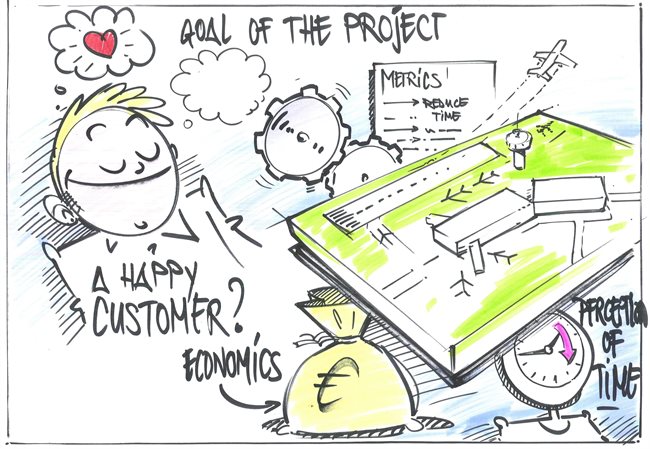
PEGASO Fit for Future
Title: PEGASO Fit for Future
Funder: European Commission Framework Programme 7
Total value: €11,610,910
Start to End date: December 2013 – May 2017
HFRG members:
Summary:
Obesity and other lifestyle-related illness are among the top healthcare challenges in Europe. Obesity alone accounts for up to 7% of healthcare costs in the EU, as well as wider economy costs associated with lower productivity, lost output and premature death. Obesity in younger age is an alarming predictor for obesity in adulthood, but also entails short term health complications in juvenile age along with greater risk of social and psychological problems.
Knowing how to stay healthy is not enough to motivate individuals to adopt healthy lifestyles, but relevant progress can be achieved through the use of incentives delivered through a combination of processes and mobile technologies.
Recognizing the effectiveness of this approach, the PEGASO project will develop a multi-dimensional cross-disciplinary ICT system that will exploit sophisticated game mechanics to motivate behavioral changes towards healthier lifestyles and prevent overweight and obesity in the younger population.
The project relies on ICT technologies to implement a framework for the promotion of an health service based on three main features:
- individual and environmental monitoring, including wearable sensors, mobile phone and multimedia diaries for the acquisition of physical, physiological and behavioural attributes of participants;
- feedback to the user, presenting personalised healthy options for alternative lifestyles;
- social connectivity, encouraging involvement in social network experience sharing and social engagement.
For the system development, a user centered approach, social and networked games and online education will be used. PEGASO will be tested with over 300 adolescents in three EU member states (Spain, Italy, UK). The development of PEGASO project will mobilize a wide stakeholders' ecosystem contributed by National Health Authorities and Research Institutions, Industries and Academia from the ICT and healthcare sectors, as well as food companies and SMEs.
Key publications
Pegaso Fit for Future
Presence in the Past
Title: Presence in the Past
Funder: British Council Newton –Mosharafa
Total value: £500,000 (UNott £250,000)
Start to end date: 2015 - 2017
Summary:
This project, building on existing collaborations between The University of Nottingham, Ain Shams and Alexandria Universities, will digitally record a range of Egyptian maritime sites, construct accurate photo-realistic 3D visualisations, and then make them available online as part of a virtual maritime research centre for a worldwide research community. It is Egypt's cultural heritage accumulated over thousands of years that gives Egypt its identity and prestige. However, only a small proportion of this resource is known to the world and major milestones in human heritage are still hidden underwater or are inaccessible to human exploration. Preservation of these hidden treasures using state-of-the-art methods in 3D digital capture and interactive visualisation will move them "into the laboratory", allowing a larger number of scientists and students from a variety of disciplines to be involved in innovative scientific exploration, eventually leading to more discoveries and global awareness of human heritage that can be transferred to next generations.
Project partners:
- Ain Shams University
- Alexandrina University
Underwater Archaeology Research Centre
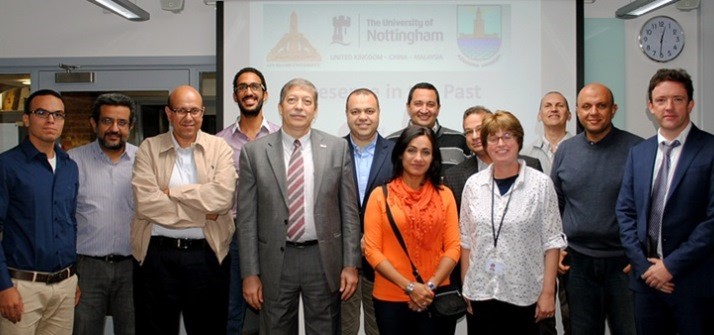
PROSPECT (Proactive Safety for Pedestrians and Cyclists)
Summary:
Prospect is a large 3.5 year project funded by the EU under Horizon 2020 considering the development of next generation collision avoidance systems to account for the needs of vulnerable road users, especially pedestrians and cyclists. There are 19 partners in the project, including many of the major vehicle manufacturers within Europe. A particular emphasis in the work at the University of Nottingham is to understand the implications of false alarms on driver acceptance for this technology and how transparency can be provided in the system design through novel HMIs, for instance augmented reality head-up displays, 3D sounds. Within the Human Factors Research Group, we are also aiming to better understand the cues that anticipate the path of a pedestrian/cyclist when crossing a road or travelling through traffic which the Prospect system can use to improve its prediction algorithms.
HFRG members:
Prospect
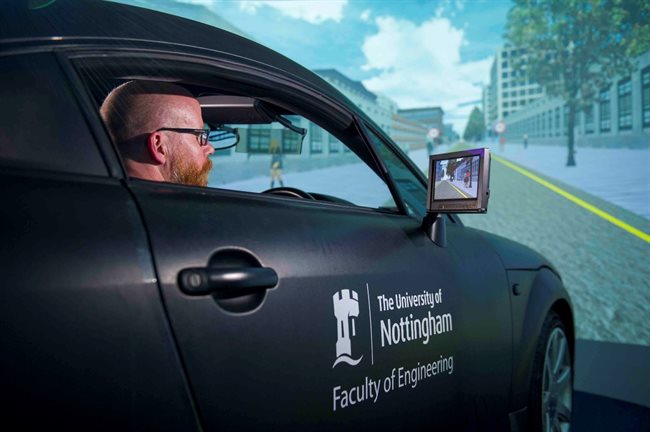
Rail Data - Examining the utility and requirements for an ontology to structure rail data in order to facilitate exchange between organisations in the rail domain
The HFRG Rail data project is being conducted in collaboration with the University of Birmingham and the University of Southampton.
The project is examining the utility and requirements for an ontology to structure rail data in order to facilitate exchange between organisations in the rail domain, with a possible focus on engineering, rolling stock etc.
The role of the HFRG team is to capture user requirements for the ontology from key rail stakeholders.
For more information, email Dr David Golightly.
Reducing headway - Examining the engineering and human factors which affect how we can safely reduce the gap between trains on the track as a mechanism to increase the railway network’s capacity
The Reducing headway project is funded by RRUK / EPSRC. The HFRG are working with partners at the University of Birmingham with contributions from the Universities of Sheffiled, Manchester Metropolitan, Loughborough and Southampton.
The project will examine the engineering and human factors which affect how we can safely reduce the gap between trains on the track as a mechanism to increase the railway network’s capacity.
This could involve trains running in “platoons”, which requires an understanding of a variety of issues including train dynamics and aerodynamics, track vibration etc; or trains running separately but much closer together than at present, which would require changes in train control methods.
For more information, email Dr David Golightly.

Sensory illusions using low-cost haptic devices to enhance spatial understanding for engineering design
Title: Sensory illusions using low-cost haptic devices to enhance spatial understanding for engineering design
Funder: EPSRC - EP/N00549X/1
Total value: £239,566
Start to end date:1 December 2015 – 31 August 2017
Summary:
This project will research the use of strategically-positioned, easy to wear, vibrating devices for improving engineers’ understanding of 3D spaces in virtual environments. The system will use low-cost technologies and support day-to-day engineering design work.
Currently, the majority of engineering design is conducted on desktop systems. These do not allow engineers to experience the 3D spaces they are designing, thus limiting design success in applications with human users, such as component access routes for assembly and reach investigations for a manufacturing line.
Engineering for users currently relies mainly on physical prototypes, which are expensive to produce and may not reflect current design intent due the time taken to build them. Digital human modelling, in which CAD representations of humans are used for ergonomics investigations, offer some benefits but are not suitable for complex motions and do not provide subjective responses. Design solutions can be viewed and experienced in virtual reality such as CAVEs, but depth perception in virtual environments can be inaccurate, leading to rejection of this technology by engineers, or unsound decision-making. Moreover, CAVEs are expensive and gaining access to them can be difficult for engineers conducting everyday design and analysis work.
This project will determine whether a small number of worn haptic (sense of touch) devices can improve spatial awareness in virtual environments.
Key publications:
Lawson, G., Roper, T., and Abdullah, Z.C. (2016). Multimodal “sensory illusions” for improving spatial awareness in virtual environments, In Proceedings of the European Conference on Cognitive Ergonomics 2016
EPSRC grant details
Smartphones interfaces for driving - Investigating the use of small screen devices in safety-critical driving situations
Increasingly, drivers wish to use their smartphones within a vehicle context. However, the use of such small screen devices in the safety-critical driving situation raises a range of driver distraction concern
This project aims to:
- Understand the demands of generic tasks that would be possible with smartphone interfaces (reading, writing, menu navigation, scrolling, etc.). This will enable decisions to be made regarding what complexities of task are acceptable/unacceptable for use by drivers.
- Design and evaluate a generic, mediating interface which enables a driver to interact with a smartphone in the driving context. Such an interface would utilise a range of interface solutions to minimise visual, biomechanical and cognitive demands.
The project will utilise the occlusion protocol to measure the inherent demands of a wide range of generic tasks. In addition, driving simulator studies will be conducted to evaluate prototype interfaces in a safe, controlled environment.
This project is funded by a major vehicle manufacturer.
For more information, email Dr Gary Burnett.
Socially connected journey - Examining the attitudes, motivations and technology/HCI challenges behind socially-connected travel
The socially connected journey project is looking at the attitudes, motivations and technology/HCI challenges behind socially-connected travel. The project is funded by RRUK and Horizon in collaboration with the Highways Agency, Avego, EON and East Midlands Conference Centre (EMCC).
This project has used a combination of surveys, diary / GPS study, interviews and technology probes to understand people’s attitudes to forms of travel such as car sharing and taxi sharing, as well as design and deployment issues such as UI, privacy, incentives and organisational context.
For more information, email Dr David Golightly or Prof Sarah Sharples.
User-centred design and geographic information - A knowledge transfer partnership with Ordnance Survey that aims develop a set of user centred design tools for the evaluation and design of geographic information
In September 2009, Ordnance Survey began a Knowledge Transfer Partnership with the University of Nottingham, part supported by the Technology Strategy Board.
The aim of this partnership is to develop a set of User Centred Design (UCD) tools for the evaluation and design of geographic information and implement them within the organisation. This process will allow Ordnance Survey to create products that are better matched the needs of its customers improve the experience for users of our products.
UCD is a field of research has existed for many years within the world of software and hardware design, but few have implemented it with the design of information products. Over the fifteen months, over a dozen different tools have been developed to help identify user needs, evaluate product usability and generally improve our design process. These tools are currently being tested with a range of different Ordnance Survey products and user groups.
For more information, email Prof Sarah Sharples.
Vigilance in rail - Aims to assist the rail industry to understand the risks and influencing factors of the work of a Railway Lookout
In September 2009, Ordnance Survey began a Knowledge Transfer Partnership with the University of Nottingham, part supported by the Technology Strategy Board.
The aim of this partnership is to develop a set of User Centred Design (UCD) tools for the evaluation and design of geographic information and implement them within the organisation. This process will allow Ordnance Survey to create products that are better matched the needs of its customers improve the experience for users of our products.
UCD is a field of research has existed for many years within the world of software and hardware design, but few have implemented it with the design of information products. Over the fifteen months, over a dozen different tools have been developed to help identify user needs, evaluate product usability and generally improve our design process. These tools are currently being tested with a range of different Ordnance Survey products and user groups.
For more information, email Prof Sarah Sharples.
Past Projects
3D-PITOTI - 3D acquisition, processing and presentation of prehistoric European rock-art
Title: 3D-Pitoti: 3D acquisition, processing and presentation of prehistoric European rock-art
Funder: European Commission Framework Programme 7 (ICT-600545)
Total value: €3,702,955
Start to end date: March 2013 – February 2016
Summary:
Valcamonica, in the Lombardy region of northern Italy, has some of the best rock art in the world. These “Pitoti” (meaning little puppet in the local dialect) are on the UNESCO list of world heritage. Tens of thousands of Pitoti images span a period from about 4000 BC into medieval times. However, the evolution of the Pitoti graphics is omitted from our standard history story. 3D-PITOTI provided the step change needed by researching and developing: an affordable and portable multi-scale 3D scanning toolkit for the high resolution acquisition of Pitoti figures and their natural context; Intelligent data processing technologies to enrich the scanned 3D data by classification, clustering and retrieval techniques; and Interactive 3D visualization and presentation techniques to provide access to the enriched high resolution digital rock-art for scientists, museum visitors and school children.
Project partners:
- St Polten University of Applied Sciences (FHSTP), Austria
- University of Cambridge (CAM), UK
- Bauhaus Universität Weimar (BUW), Germany
- Graz University of Technology (TUG), Austria
- ArcTron 3D GmbH (ArcTron), Germany
- Centro Camuno di Studi Preistorici (CCSP)
Key publications:
- Lackovic. N., Crook, C., Cobb, S., Shalloe, S. and DCruz, M. (2015). Imagining technology-enhanced learning with heritage artefacts: teacher-perceived potential of 2D and 3D heritage site visualisations. Educational research, 57 (3), 331-351. DOI:10.1080/00131881.2015.1058098
European Commision CORDIS: 3D-PITOTI project details
European Commission CORDIS: 3D-PITOTI Result In Brief
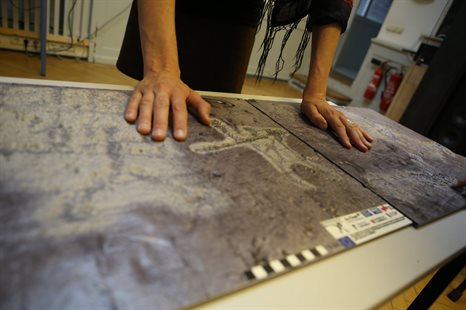
AS Interactive - Development of Social Skills amongst adults with Asperger’s Syndrome using Virtual Environments
Project duration: 2000-2003
Budget: £400,000
Sponsor: The Shirley Foundation
Summary:
This project allowed us to conduct leading edge research into use of 3D interactive virtual environments for ASD social skills training. The AS Interactive project aimed to find out whether people with ASDs could use desktop VEs successfully, and what they understood about them. We used a combination of experimental and qualitative approaches to investigate three main topics: use and understanding of virtual environments and the potential they offer for learning specific social skills. The same students with ASDs were included in all three studies and ranged in age from 13 to 18 years. All participants had a full scale IQ of 70 or greater. Users completed tasks in different scenarios including a virtual cafeteria and a virtual bus. In both scenarios, the task given to users involved finding a place to sit. This required understanding of social conventions regarding queueing and sitting near to other people. These tasks required them to make decisions about how to socially interact with virtual characters. They could ask questions or find out what the characters were thinking. The project found that ASD users do interpret virtual environments as real-world simulations and so can be used to assess and support social interaction skills. A teaching resource pack was produced to provide guided notes and printable material to support training activities in the classroom or community.
HFRG members:
- Sue Cobb
- Helen Neale
- Anja Rutten
- Steve Kerr
- Richard Eastgate
- John R. Wilson
University of Nottingham members:
- Sarah Parsons (Psychology)
- Anne Leonard (Psychology)
- Peter Mitchell (Psychology)
- Tony Glover (Computer Science)
- Gail Reynard
- Steve Benford (Computer Science)
Project partners:
- Eileen Hopkins – National Autistic Society
- Sutherland House School
- Rosehill School
Publications:
- Rutten, A., Cobb, S., Neale, H., Kerr, S., Leonard, A., Parsons, S., and Mitchell, P. (2003). The AS Interactive Project: Single-User and Collaborative Virtual Environments for People with High-Functioning Autistic Spectrum Disorders. Journal of Visualization and Computer Animation, 14, (5), 233-241.
- Cobb, S., Beardon, L., Eastgate, R., Glover, T, Kerr, S., Neale, H., Parsons, S., Benford, S., Hopkins, E., Mitchell, P., Reynard, G., & Wilson, JR. (2002). Applied Virtual Environments to support learning of Social Interaction Skills in users with Asperger’s Syndrome, Digital Creativity, Vol. 13, No.1, 11-22.
- PhD Thesis: Scaffolded learning in virtual environments. Steven Kerr (2005)
CATER - Aimed to provide automotive companies with a suite of ICT tools including VR interfaces for product design and manufacturing
Title: CATER: Computerized Automotive Technology Reconfiguration System for mass customization
Funder: European Commission Framework Programme 6 (IST-035030)
Total value: €5,623,821
Start to end date: September 2006 – August 2009
Summary:
Automotive enterprises are becoming more customer-centric to meet today's challenging market demands. Thus, mass customization adds industrial value to the enterprise in gaining competitive advantage. The automotive industry has furthermore become highly networked and requires improved communication on products and components in its B2B relations. In this context, CATER is tailored to bridge the gaps in existing ICT through an integrated system that caters to the needs of customers, manufacturers and suppliers.
There are three major aspects of the proposal. First, CATER is a design philosophy and showcases best practices of networked business. The goal of n-business is to achieve at mass customization over the Internet through coherently integrating manufacturing production automation with supply chain management and sales-service support into a collaborative web. A suite of innovative solutions for n-business will be developed in CATER.
Second, CATER introduces ICT innovations in various business processes. The innovations include: citarasa engineering, 3D do-it-yourself design system with virtual reality interface, teardown reconfiguration system, design history system, and integration of CATER databases within supply chain management.
Third, CATER demonstrates the need for a semantic driven system that ties together customers and designers. Customers are supported in their online customization of cars; their affective and cognitive needs are addressed to provide e-catalogues of design options. Designers, on the other hand, need to be supported in their design activities through teardown and design history management systems so that they can provide reliable and timely solutions. CATER-generated semantics provide a common vocabulary and platform that connects and integrates designers, suppliers and related stakeholders within a supply chain management framework.
HFRG members:
Project partners:
- Centre For Research And Technology Hellas, Greece
- Centro Ricerche Fiat - Societa' Consortile Per Azion, Iitaly
- Damai Sciences Sdn Bhd Ltd, Malaysia
- Icido Gesellschaft Fuer Innovative Informationssysteme Mbh, Germany
- Imartis Ag, Switzerland
- Nanyang Technological University, Singapore
- Sigma Consultants, France
- Universitaet Basel, Switzerland
- Universitaet Stuttgart, Germany
- Universiti Malaysia Sarawak, Malaysia
- Vaasan Yliopisto, Finland
- Volvo Technology Ab, Sweden
European Commission CORDIS: Researchers CATER to car buyers' needs
European Commission CORDIS: CATER project details
CoSpaces - Aimed to create an underlying configurable and dynamic software framework that supports easy creation of Collaborative Working Environments (CWE) for teams involved in design and engineering tasks
Title: CoSPACES: Innovative collaborative work environments for individuals and teams in design and engineering
Funder: European Commission Framework Programme 6 (IST-034245)
Total value: €11,839,624
Start to end date: May 2006 – October 2009
Summary:
The overall objective of CoSpaces is to develop organisational models and distributed technologies supporting innovative collaborative workspaces for individuals and project teams within distributed virtual manufacturing enterprises to establish effective partnerships, collaborate, be creative, improve productivity, reduce length of design cycles and take a holistic approach to implementing product phases. This will be achieved through enhanced human communication, innovative visualisation, knowledge support and natural interaction and will transform the current working practices to be more competitive in the global market.
CoSpaces proposes to validate these collaborative workspaces against three sectors:
- aerospace
- automotive
- construction
However, the impact of this research will go beyond these three sectors due to the generic nature of the technologies. CoSpaces will undertake the ambitious challenge of developing the technical, organisational and human networks to build collaborative workspaces. This will be achieved through a systematic and integrated programme of RTD activities, dissemination, training, demonstration and exploitation activities.
HFRG members:
Project partners:
- X/Open Company Limited, UK
- Centre Europeen De Recherche Et De Formation Avancee En Calcul Scientifique, France
- Cimpa, France
- Consultores De Automatizacion Y Robotica S.A., Spain
- Cowi A/S, Denmark
- Esoce Net (European Society Of Concurrent Engineering), Italy
- Fraunhofer Iaf, Germany
- Frietuna Computer Consultants Limited, UK
- National Technical University Of Athens, Greece
- Pragmasis - Sistemas De Informacao Lda, Portugal
- Societa Finanziaria Laziale Di Sviluppo - Fi.La.S. S.P.A., Italy
- Stichting Telematica Instituut, The Netherlands
- The University Of Salford, UK
- Uninova - Instituto De Desenvolvimento De Novas Tecnologias, Portugal
- Universitaet Stuttgart, Germany
- Universitaet Zu Koeln, Germany
- Universiteit Leiden, The Netherlands
- Universiteit Twente, The Netherlands
- Varinex Informatikai ZRt, Hungary
- Virce - Kompetenzzentrum Virtuelle Realitaet Und Kooperatives Engineering W.V., Germany
Key publications:
- Patel, H., Pettitt, M. and Wilson, J. (2012). Factors of collaborative working: A framework for a collaboration model. Applied Ergonomics, 43, 1-26.
- Patel, H., Pettitt, M., Hansen, S., Wilson, J. (2010). A descriptive model of collaboration to underpin a collaboration profiling methodology. International Reports on Socio-Informatics 7 (1), 15-23 [online]. Available from: http://www.iisi.de/fileadmin/IISI/upload/IRSI/IRSIV7I1.pdf
- Pettitt, M., Patel, H., Wilson, J. (2009). Design guidance for collaborative working environments. Design Principles and Practices: An International Journal 3 (3), 117-132.
- Pettitt, M., Patel, H. and Wilson, J. (2009). Design guidance for collaborative working environments. In proceedings of The 3rd International Conference on Design Principles and Practices, Berlin, 15-17th February, 2009.
- Wilson, J. R., Patel, H., and Pettitt, M. (2009a). Human factors and development of next generation collaborative engineering. In: Proceedings of the Ergonomics Society Annual Conference, London, 22-23 April 2009, London: Taylor and Francis.
- Wilson, J., Patel, H., Pettitt, M., and Saikayasit, R. (2008). ADDS: Living labs for collaborative engineering. In J. Schumacher and V-P. Niitamo (Eds.): European Living Labs: A new approach for human centric regional innovation. Wissenschaftlicher Verlag Berlin.
European Commission CORDIS: COSPACES Innovative collaborative work environments for individuals and teams in design and engineering
COSPATIAL - Aims to develop collaborative technologies designed to promote the learning of social competence by children with Autism Spectrum Conditions (ASC)
Project duration: 2009-2012
Budget: €1.6M
Sponsor: EU FP7 ICT – Digital Libraries and Technology-enhanced Learning
Summary:
Children with autism often experience difficulties with social interactions. The COSPATIAL project explored the use of innovative technologies for supporting social competence for children on the autism spectrum.
The project focused on the use of two main types of technologies: Collaborative Virtual Environments (CVE) and Shared Active Surfaces (SAS). Critically, these technologies specifically foster collaborative interactions, meaning that children play and learn with their peers, unlike typical technological interventions which are often undertaken individually. The COSPATIAL applications were developed to provide safe, comfortable and structured support guided by principles of Cognitive-Behavioural Therapy. The COSPATIAL research team is multidisciplinary, comprising psychologists, occupational therapists, computer scientists, human factors experts and educators. The applications were designed with close involvement from teachers, children and young people, parents and other professionals, to ensure that they take the complex needs of children on the autism spectrum into account, along with the practical needs from the educational context.
HFRG members:
- Sue Cobb
- Harshada ‘Ash’ Patel
- Tessa Roper (nee Hawkins)
- Laura Millen
- Tony Glover (MRL)
Project partners:
- FBK, Trento, Italy – Project Co-ordinators
- University of Southampton, UK
- University of Haifa, Israel
- Bar Ilan University, Israel
Publications:
- Parsons, S. and Cobb, S. (2014). Reflections on the role of the ‘users’: challenges in a multidisciplinary context of learner-centred design for children on the autism spectrum. International Journal of Research & Method in Education, DOI:10.1080/1743727X.2014.890584
- Millen, L., Cobb, S., Patel, H. and Glover, T. (2014). A collaborative virtual environment for conducting design sessions with students with autism spectrum disorder. Int J Child Health Hum Dev 2014;7(4):367-376
- Parsons, S. & Cobb, S. (2013) Who chooses what I need? Child voice and user-involvement in the development of learning technologies for children with autism. EPSRC Observatory for Responsible Innovation in ICT: http://torrii.responsible-innovation.org.uk/resource-detail/1445 [last accessed 8th September 2013].
- Parsons, S. and Cobb, S. (2011). State-of-the art of Virtual Reality technologies for children on the autism spectrum.European Journal of Special Needs Education (EJSNE). 26, (3), 355-366.
- PhD Thesis: Collaborative technologies for children with autism. Laura Millen (2014)
Applying Participatory Design to Develop Technology for Autism Evaluation and Treatment.
Online course in collaboration with Autism Speaks
DiFac - The development of a framework of methods and tools that are built upon the theoretical foundations of presence, collaboration and ergonomics
Title: DiFac: Digital Factory for Human Oriented Production System
Funder: European Commission Framework Programme 6 (IST-035079)
Total value: €3,617,542
Start to end date: May 2006 – Apr, 2011
Summary:
A digital factory is a persistent community where a rich virtualized environment, representing a variety of factory activities, will facilitate the sharing of factory resources, manufacturing information and knowledge and help with the simulation of collaborative design, planning, production and management among different participants and departments.
The DiFac project (EU project number FP6-IST-5-035079 http://www.difac.net/) is a framework of methods and tools which is being built upon the theoretical foundations of presence, collaboration and ergonomics. The DiFac framework will support group work in an immersive and interactive way, for concurrent product design, prototyping and manufacturing, as well as worker training. It will provide support for data analysis, visualization, advanced interaction and presence within virtual environments, ergonomics analysis, and collaborative decision-making.
HFRG members:
Project partners:
- Industrial Technology and Automation of the National Research Council of Italy ITIA-CNR, Italy
- Mathématiques S.A MASA, France
- Computer and Automation Research Institute of Hungarian Academy of Sciences SZTAKI, Hungary
- Laboratory for Manufacturing Systems and Automation of the University of Patras LMS, Greece
- Fraunhofer Institute for Manufacturing Engineering and Automation IPA-FhG, Germany
- Technology Transfer System S.R.L TTS Italy
- Ropardo S.R.L ROPARDO, Romania
- V-Fab GmbH V-FAB, Germany
- Metaio GmbH METAIO, Germany
- Prima Industrie S.p.A, Italy
- Pantelis Pashalidis & Sons S.A PPS, Greece
Key publications:;
- Sacco, Marco, Redaelli, Claudia, Constantinescu, Carmen, Lawson, Glyn, D'cruz, Mirabelle And Pappas, Menelaos, 2007. Difac: Digital Factory For Human Oriented Production System Human-Computer Interaction, Pt 4, Proceedings. 4553, 1140-1149
- Lawson, Glyn And D'cruz, Mirabelle, 2011. Ergonomics Methods And The Digital Factory Digital Factory For Human-Oriented Production Systems: The Integration Of International Research Projects. 23-34
Intelligent Manufacturing Systems
European Commission CORDIS: Digital factory for human oriented Production System
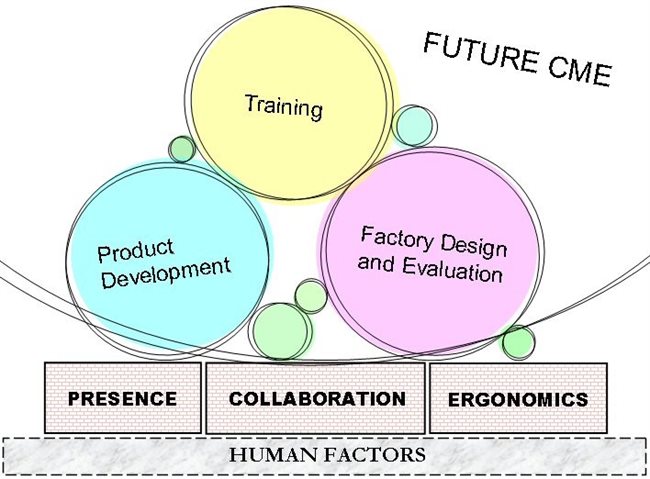
e-Laboratories for Physics and Engineering in Education - Aims to establish a virtual internet-based engineering campus for laboratory exercises
In Egypt there is a need to develop and strengthen the educational quality in engineering courses. The number of students enrolled in the Engineering disciplines is increasing, and Egyptian universities face the problem of overcrowded classes and laboratories. There is consequently a difficulty of delivering high quality education, which in turn affects the quality of graduating engineers. The TEMPUS e-Laboratories for Physics and Engineering Education (eLab) project has the broad objective to produce a new generation of engineers capable of performing constructive engineering work in different engineering fields – mechanical, electrical, and civil – in fast-changing business environments.
The eLab project is still in its first year, but builds on a previous TEMPUS project (JEP-34012) in which a virtual reality lab was established at Ain Shams University where students are able to perform virtual experiments in the Mechanical Engineering area.
The project aims to establish a virtual internet-based engineering campus for laboratory exercises, to provide access to the experimental aspect of engineering education that is currently lacking. These exercises will target students in mechanical, electrical and civil departments, as well as Physics education in high schools and students undertaking preparatory engineering courses. The solution developed will include the following features:
Virtual e-Laboratory – several electronic laboratory exercises for engineering education, formulated so that students can access these laboratory exercises from home and go through different experiments to complete a certain lab sheet or homework assignment. The developed experiments will be web-based
- Remote laboratory – access to real, “hard” experiments carried out at the university campus that can be controlled remotely through web-based interfaces.
- The ability for students to communicate interactively with online instructors, and potentially with other students. This allows the eLab to deliver much of the benefit of real face-to-face laboratory participation.
The e-Lab Project is funded under the European TEMPUS programme (517102-1-2011-SE-TEMPUS-JPCR).
For more information please email either Dr Sue Cobb, Dr Richard Eastgate or Tessa Roper.
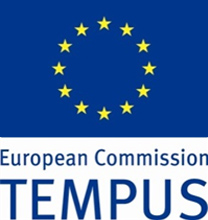
ECOTRAX - A proof of concept project for an eco-driving product for trains
This is a proof of concept project for an eco-driving product for trains.
Project partners are collecting real-time train journey and infrastructure related data (e.g. speeds, energy consumption, relevant infrastructure and environmental conditions) and developing algorithms which will support a new driver advisory system.
We are using a participative approach to design the interface for the driver advisory system, using input from drivers and other relevant stakeholders in focus groups, scenario studies and simulator studies.
The ECOTRAX project is funded by INET and partners include the Nottingham Geospatial Institute, University of Nottingham, Nottingham Scientific Limited, Integrated Vehicle Technologies, with support from East Midlands Trains.
For more information about ECOTRAX, email Sally Shalloe or Dr Brendan Ryan.
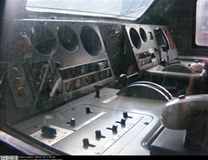
I-BIT - The I-BiT™ system uses specially configured VR technology to treat Amblyopia (‘lazy eye’)
Amblyopia, or ‘lazy eye’ is reduced vision in one eye which is usually treated by wearing a patch over the non-amblyopic ‘good’ eye for several hours per day, over a period of many months. Understandably, this treatment is not very popular with young children.
Working as a unique collaboration our multi-disciplinary team involves orthoptists, ophthalmologists and IT technologists from the Human Factors Research Group (HFRG), University of Hull and the National Health Service (NHS). Together we have devised a novel virtual-reality based system, the I-BiT™ system, in which children play interactive computer games or watch videos.
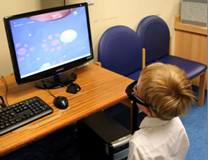
We have recently received a Wellcome Trust Translation Award to further develop the I-BiT system. The project runs from April 2010 to March 2013 and is currently in the developmental phase. The aim of our research is to provide a new way to treat amblyopia, that young children will find interesting and so comply with treatment.
The I-BiT™ system uses specially configured VR technology to allow more stimulation to the lazy eye to encourage this eye to be used. The innovation is that this is a binocular treatment and the non amblyopic “good” eye is not patched.
Early clinical trials have showed encouraging results, with increases in vision in some children after only six weeks of treatment.
For more information, visit the I-BiT™ website or email Dr Richard Eastgate.
IMOSHION - Aims to support health and safety in European Small-to-Medium Enterprises (SMEs)

Title: IMOSHION: Improving Occupational Safety and Health in European SMEs with the help of Simulation and Virtual Reality
Funder: European Commission Framework Programme 7 (SME-243481)
Total value: €2,864,556.50
Start to end date: March 2011 – February 2014
Summary:
The project IMOSHION (Improving Occupational Safety and Health in European SMEs with help of Simulation and Virtual Reality) is implemented by 10 partners from 6 European countries that have a common interest in improving working conditions in small and medium sized enterprises in the manufacturing sector. The project focuses on two aspects: On the one hand it collects existing knowledge and creates new information concerning OSH issues. On the other hand it wants to develop tools and techniques to raise awareness and improve OSH in SMEs.
HFRG members:
Project partners:
Key publications:
FLOYDE, A., LAWSON, G., SHALLOE, S., EASTGATE, R. and D'CRUZ, M., 2013. The design and implementation of knowledge management systems and e-learning for improved occupational health and safety in small to medium sized enterprises: Safety Science Safety Science. 60, 69-76
IMOSHION background information
European Commission CORDIS: IMOSHION
KidStory - Developing Storytelling Tools for Children, with children
Project duration: 1998-2001
Sponsor: The European Commission, ESPRIT i3
Summary:
The KIDSTORY project produced two new collaborative storytelling technologies for children in the age group three to eight years. KidPAD is a shared drawing surface featuring a zooming interface, that allows children to create simple graphical stories and bring them to life by animated zooming. KidDIVE, is a formless three-dimensional object that acts like modelling clay. A group of children can pull it around, colour it and texture it in order to create characters and other story objects. Both of these technologies demonstrate an approach to interface design that encourages children to collaborate without forcing them to do so.
Another aspect of the KidStory project was the pioneering approach of 'children as inventors'. Instead of treating children as experimental subjects or as informants, they were involved as design partners and their design ideas incorporated. The project worked closely with children in two schools in Stockholm and Nottingham. Activities ranged from low technology prototyping sessions using cardboard, string, glue, crayons and other familiar materials, through to intensive technology immersion sessions using KidPAD and KidDIVE.
HFRG members:
- Sue Cobb
- Helen Neale
- John R. Wilson
University of Nottingham members:
- Danae Stanton (Psychology)
- Claire O’Malley (Psychology)
- Steve Benford (Computer Science)
Project members:
- SICS, Sweden
- University of Stockholm, Sweden
- University of Maryland, USA
LARTE (Live Augmented Reality Training Experience) - Aims to explore the use of augmented and virtual reality technologies for training automotive service professionals
Title: LARTE - Live Augmented Reality Training Environments
Funder: Innovate UK – 101509
Total value: £308,643
Start to end date: 2013-2015
Summary:
LARTE Project was initiated to investigate and challenge the effectiveness of traditional training and learning environments and methodologies, creating new configurable - dynamic environments that will transform the way engineering staff are train and developed.
The goal of the project was to develop a prototype software solution, to prove out the ability to create Virtual and Immersive training environments that support the learning of infrequent tasks. These environments could become commonplace in industry to accomodate increasing customisation in future widescale manufacture. The project brought together the Human Factors research skills of The University of Nottingham with the visualisation technology, expertise of Holovis and the extensive data and use case provided within manufacturing and service environments of Jaguar Land Rover.
HFRG members:
Project partners:
Key publications:
Borsci, S., Lawson, G. and Broome, S. (2015) Empirical evidence, evaluation criteria and challenges for the effectiveness of virtual and mixed reality tools for training operators of car service maintenance. Computers in Industry, Volume 67, February, 2015, pp 17 -26 ( http://www.sciencedirect.com/science/article/pii/S0166361514002073)
Borsci, S., Lawson, G., Jha, B., Burges, M. and Salantri, D. (2016) Effectiveness of a multidevice 3D virtual environment application to train car service maintenance procedures. Virtual Reality, March 2016, Volume 20, Issue 1, pp 41-55 ( http://link.springer.com/article/10.1007/s10055-015-0281-5)
Research Councils UK project details
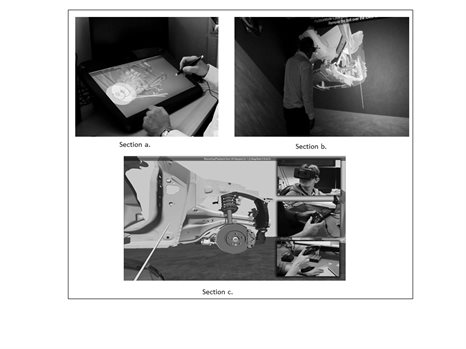
ManuVAR - Using virtual and augmented reality (VR/AR) to improve the competitiveness of EU industries
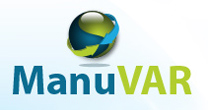
Title: ManuVAR: Manual work support throughout system lifecycle by exploiting virtual and augmented reality
Funder: European Commission Framework Programme 7 (NMP–211548)
Total value: €9,649,244.00
Start to end date: May 2009 – April 2012
Summary:
Manual work (MW) is a central and expensive component of manufacturing, assembly, testing and maintenance services in Europe. There are many industrial sectors that rely on the knowledge and skills of their manual workers, for example, satellite assembly, maintenance of nuclear reactors, operation of complex machinery, design and manufacturing of highly customised products. In these sectors, MW constitutes the core operations and it cannot be off-shored or automated. According to Eurostat (2008), there are about 19 million people involved in the high knowledge high value MW in Europe, mainly as plant and machine assemblers and operators. Considering the entire product lifecycle (LC) from design to recycling, the number of people related to MW is even larger.
The MANUVAR objective is to provide a systematic technological and methodological system to support high knowledge high value MW throughout the product LC. It combines the best potential of the lean and agile models with the knowledge and skill management in the product LC. The ultimate goal of MANUVAR is to go 'beyond lean manufacturing' in order to:
- increase productivity and quality and reduce cost of manual work in the whole LC ('lean');
- facilitate adaptation to product customisation and changes ('agile');
- Support efficient knowledge and skill management and bi-directional data and knowledge flows through the LC ('beyond')
HFRG members:
Projectpartners:
- Technical Research Centre Of Finland (VTT), Finland
- Fraunhofer Institute For Factory Operation And Automation (IFF), Germany
- Netherlands Organization For Applied Scientific Research (TNO), Netherlands
- Fatronik - Tecnalia, Spain
- Institute Of Communications And Computer Systems (ICCS), Greece
- Trinity College, University Of Dublin (TCD), Ireland
- University Of Malaga (UMA), Spain
- University Of Nottingham (Unott), UK
- Tampere University Of Technology (TUT), Finland
- Thales Alenia Space Italia (TAS-I), Italy
- IPA Total Productivity (IPA TP), Netherlands
- New Strategies Of Maintenance S.L. (NEM S.L.), Spain
- Tecnatom, Spain
- Carr Communications, Ireland
- Hermia Business Development (HBD), Finland
- Association For Advancement Of Radical Behavior Analysis (AARBA), Italy
- Cards PLM Solutions, Netherlands
- Metso Minerals, Finland
Key publications:
- Liston, Paul M., Kay, Alison, Cromie, Sam, Leva, Chiara, D'cruz, Mirabelle, Patel, Harshada, Langley, Alyson, Sharples, Sarah And Aromaa, Susanna, 2012. Evaluating The Iterative Development Of Vr/Ar Human Factors Tools For Manual Work Work-A Journal Of Prevention Assessment & Rehabilitation. 41, 2208-2215
- Liston, Paul, Cromie, Sam, Leva, Maria-Chiara, Helin, Kaj And D'cruz, Mirabelle, 2010. Manuvar Training: Supporting The Implementation And Design Of Vr/Ar Quality-Improvement Tools For Manual Handling Advances In Occupational, Social, And Organizational Ergonomics. 653-663
- Krassi, Boris, D'cruz, Mirabelle And Vink, Peter, 2010. Manuvar: A Framework For Improving Manual Work Through Virtual And Augmented Reality Advances In Occupational, Social, And Organizational Ergonomics. 725-734
ManuVAR deliverables
European Commission CORDIS: ManuVAR Result In Brief
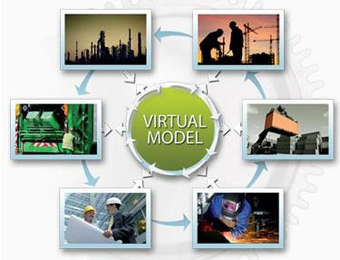
MATCH - Applying human factors methods and approaches to the development and evaluation of new medical devices
The MATCH project is an EPSRC Innovative Manufacturing Research Centre and a 10 year collaboration between 4 UK universities (Nottingham, Brunel, Birmingham and Ulster). The aim of MATCH is to improve the quality of medical devices produced in the UK and we aim to do this by supporting the healthcare technology sector and its user communities by creating methods to assess value from concept through to mature product.
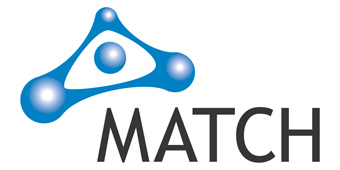
The MATCH project is an EPSRC Innovative Manufacturing Research Centre and a 10 year collaboration between 4 UK universities (Nottingham, Brunel, Birmingham and Ulster). The aim of MATCH is to improve the quality of medical devices produced in the UK and we aim to do this by supporting the healthcare technology sector and its user communities by creating methods to assess value from concept through to mature product.
MATCH is a multidisciplinary project that brings together experts from a range of disciplines including engineering, health economics, social science and medicine. In addition to the academic effort, MATCH is also working in partnership with a cohort of device manufacturers, health providers, Invest Northern Ireland and the National Patient Safety Agency.
The Nottingham hub provides particular expertise in human factors (Sarah Sharples and Jennifer Martin) and our research is primarily concerned with applying Human Factors methods and approaches to the development and evaluation of new medical devices.
Specific projects have included an evaluation of blood glucose meters by Type II diabetics and requirements elicitation for a new medical imaging device. We have also investigated the application and use of verbal protocol methods for understanding clinical tasks and environments.
Future MATCH research will focus on home and patient-use devices and aims to develop improved ways of encouraging and supporting patients to use these devices correctly, safely and regularly.
There are currently two MATCH human factors PhD students:
- Alex Lang is studying adolescent users of medical devices
- David Keane is investigating user behaviour in imaging and diagnostic medical devices
MATCH+ is a new study that recently developed from the main MATCH project. The aim of this is to develop novel methods of valuing issues such as design and usability. We are working with statisticians, economists and social scientists at the universities of Sheffield, Birmingham and Brunel on new health economic techniques that will allow manufacturers to calculate the effects of improved design of a device on cost-effectiveness.
For more information, visit the MATCH website or email Dr Sarah Sharples or Dr Jennifer Martin.
MyUI - Aims to improve the accessibility of ICT products for older users by carrying out research into user requirements and behaviour and promoting inclusive design

Project duration: 2009-2012
Budget: €3.4M
Sponsor: FP7 – Accessible and Assistive ICT
Summary:
The project aimed to improve the accessibility of ICT products for older users through the implementation of adaptive personalised interfaces, designed around individual user profiles. An inclusive design approach was taken involving older users in a series of activities to identify user behaviour when they found screen-based information difficult to interact with and user preferences for system adaptation to alleviate this (e.g. when the system detects that a user is leaning towards the TV screen, it infers a problem with visibility and increases text size). A prototype demonstration of an interactive TV system was produced by the project, demonstrating: Adaptive user interfaces for interactive TV and mobile devices; Automatic adaptations to special user needs and perceptual, motor and cognitive impairments; Tools for the development of adaptive user interfaces. The project deliverable reports provide guidance for designers and developers of accessible applications and service.
HFRG members:
- Rob Edlin-White
- Anne Floyde
- Jennie Brown
- Laura Lewis
- Sue Cobb
- Mirabelle D’Cruz
Project partners:
- Sarah Lewthwaite (Education, UoN)
- Jing Wang (Business School, UoN)
- Johann Riedel (Business School, UoN)
- Fraunhofer Institute for Industrial Engineering IAO (FHG), Germany – Project Coordinators
- TP Vision (former TV dept. Philips Consumer Lifestyle) Innovation Site Eindhoven, Netherlands
- Ingeniería y Soluciones Informáticas del Sur (ISOIN), Spain
- Clevercherry.com (CC), UK
- Universidad Carlos III de Madrid (UC3M), Spain
- University of Nottingham (UNOTT), UK
- FZI Research Center for Information Technologies (FZI), Germany
- Semmelweis University (SOTE), Hungary
- Birmingham City Council (BCC), UK
- Ayuntamiento de Getafe (ADG), Spain
Key contribution factors:
- Stakeholder engagement and elicitation of user requirements
- Evaluation and validation of game concepts
- User evaluation and validation of the technologies and apps
Publications:
- Edlin-White, R; Cobb, S; Floyde, A; Lewthwaite, S; Wang, J. & Riedel, J. (2012) From guinea pigs to design partners – involving older people in technology design, Chapter 16. In: Langdon, P; Clarkson, J; Robinson, P; Lazar, J. & Heylighen, A. (Eds) Designing Inclusive Systems - Designing Inclusion for Real-world Applications, Springer Verlag, London, pp 155-164. ISBN 978-1-4471-2866-3. DOI: 10.1007/978-1-4471-2867-0_16 .Link: http://www.springerlink.com/content/m1250617l51rpj82/
- PhD Thesis: Design and evaluation of adaptive interfaces for elderly users. Rob Edlin-White (2014)
On-Time - An EU FP7 project looking to increase capacity in rail networks
On-time is an EU FP7 project looking to increase capacity in rail networks. It will capture best practice from across EU rail stakeholders to provide new algorithms and decision support tools for handling minor and major perturbations, both for control functions and driver advisory systems. Nottingham’s role is to support user requirements capture, and to understand the socio-technical implications of implementing these technologies in the control room. We are also leading the HF and HMI work for the driver advisory element of the project.
For more information, visit the On-Time website or email Dr David Golightly.
- Requirements for tests of child finger entrapment in European safety standards
Requirements for tests of child finger entrapment in European safety standards’ carried out by the IOE at the University of Nottingham for ANEC Child Safety WG R&T. The study explored the age children begin to explore with their fingers by observing children’s interactions with openings.
A review of anthropometric data and literature on secular trends was carried and dimensional requirements for static entrapment were defined using the major published sources of children’s anthropometric data, measured during the 1970s and 1980s (e.g. those in Childata, 1990). In order to assess the depth requirements for openings, data have been extrapolated in this study to estimate the finger tip length of both the middle and little fingers and for children aged from birth. The study makes recommendations for requirements for static entrapment hazards based on these data and calculations. Scanning technology was explored for use in measuring the response to entrapment.
The findings will soon be presented to the members of the Child Safety Working Group in Brussels.
For more information, please email Dr Sarah Atkinson.

SATIN - Aimed to investigate a new generation of multimodal and multisensory interfaces, supporting free-hand interaction with virtual shapes
Title: SATIN: Sound And Tangible Interfaces for Novel product shaping
Funder: European Commission Framework Programme 6 (IST-034525)
Total value: € 5,133,867
Start to end date: October 2006 – September 2009
Summary:
The main objective of the project is to develop a new generation of multimodal and multisensory interfaces, which provide natural and adaptive tools to support users, intentions and behavior, supporting free-hand interaction with virtual shapes.
They consist of:
- multimodal interface based on fusion of force feedback, sound and vision for representing global and local properties of shape and material, which can be perceived statically or dynamically during exploration and modification of digital shapes performed by users through free-hand, unconstrained, robust and ergonomic interaction;
- novel haptic and tangible interfaces allowing users to modify digital shapes through free-hand interaction which aims at exploiting users' dexterity and skills in physically interacting with materials.
The goal of SATIN is to study and evaluate the novel interfaces integrated into a new system for product design, which will be used by designers for modeling, modifying and evaluating digital shapes through free-hand interaction which exploits designers' existing skills, by mimicking their real operations on physical clay models.
The main objective in terms of technological advances and exploitation of results is fostering European leadership in the field of multimodal and haptic technologies, proposing a tangible and sound interface based on free-hand interaction which is not existing today, which can be used in various application domains like product design and, in perspective, in the medical field.
The project will contribute to advance scientific research in the field of multimodal interfaces, sound display of physical phenomena, and perception and cognition.
SATIN will promote the use of virtual prototyping in the conceptual phase of product design to a larger number of designers who operate in sectors where the leadership of high-quality European design must be maintained or even expanded by increasing efficiency and response time to market demand.
HFRG members:
Project partners:
- Politecnico Di Milano, Italy
- Think3, France
- Italdesign - Giugiaro S.P.A., Italy
- Alessi Spa, Italy
- Technische Universiteit Eindhoven, The Netherlands
- Moog Fcs B.V., The Netherlands
- Inesc Id - Instituto De Engenharia De Sistemas E Computadores, Investigacao E Desenvolvimento Em Lisboa, Portugal
- Steklarna Hrastnik, Druzba Za Proizvodnjo Steklenih Izdelkov, D.D., Slovenia
European Commission CORDIS: SATIN report summary
SerenA - Chance encounters in the Space of Idea
The SerenA project brings together colleagues at The University of Dundee, The University of Nottingham, UCL, Heriot Watt, Lancaster University, Queen Mary and Goldsmiths to explore serendipity through the use of innovative technology.
The aim of SerenA project is to transform the research processes and interactions by accommodating the creation of unexpected connections, interactions and ideas among people and among people and resources. SerenA aims to provide:
- A new insight of the nature of serendipitous interactions with both humans and computers;
- New evaluation methodologies for large scale integrated physical/virtual, hybrid human/computer environments;
- New methods for discovery and recording of information, using and enhancing Semantic Web technology;
- New domain-specific and generic knowledge encoded for use by SerenA and the Semantic Web in general;
- New working integrated physical/virtual environments for the use and sharing of discovered information;
- New documentation of the issues involved in designing and building such a system and its knowledge base.
For further information, please visit the SerenA website or email Dr Genofeva Kefalidou
Shades of Grey (SoG) - Aims to improve understanding of the relationship between environmental and interpersonal stimuli and behavioural responses
he Shades of Grey (SoG) research project is designed in response to a pressing need for novel surveillance interventions that elicit robust, reliable and usable indicators of notable behaviours in public areas and ports of entry. From a research perspective, this translates into a need for an active research paradigm to detect notable behaviours more effectively: a science of interventions.
The project draws upon expertise from behavioural psychology, social and physical sciences, and engineering to define, design, and deliver a science of interventions aimed at improving our understanding of the relationship between environmental and interpersonal stimuli and behavioural responses.
Using scientific principles, this will be brought about via the design of controlled laboratory and field experiments to empirically test the effectiveness of a suite of interventions that are designed to aid practical, real-time identification of factors (and combinations thereof) that aid detection of notable behaviours.
For more information, email Dr Alex Stedmon.
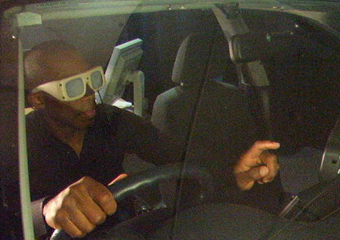
Use-It-Wisely - Aims to investigate a new business model that implements continuous product-service agility through a sequence of small innovative steps
itle: Use-It-Wisely: Innovative continuous upgrades of high investment product-services
Funder: European Commission Framework Programme 7 (NMP-FoF-609027)
Total value: €6,440,000
Start to end date: September 2013 – November 2016
Summary:
In the past, customers invested in high cost, long service-life products. Today, they demand complex product-services capable of adapting to new customer goals and rapidly changing markets. The Use-it-wisely project will enable European manufacturers to operate successfully within this new paradigm.
The project will investigate a new business model that implements continuous product-service adaptation through a sequence of small innovative steps. It will demonstrate that product-service agility and extended service life realized in this way is more viable than large and infrequent upgrades in terms of cost, duration and environmental impact.
Use-it-Wisely will develop and demonstrate the adaptation platform consisting of the following three elements: (1) multi-disciplinary actors-product-service system model; (2) adaptation mechanism based on the knowledge and skills of all actors involved with the system; (3) interactive collaborative distributed environment, where the actors work out the adaptation steps. The scientific breakthrough will be achieved by creating and validating a holistic systems engineering structure that combines human-machine systems, product lifecycle management, business and organizational dynamics and lifecycle assessment.
The industry-led consortium is founded on complementary clusters in six key industry sectors: energy, machinery, space, office workplace, vehicles, and ship building. Use-it-wisely will enable new business for the manufacturers and their suppliers, subcontractors and open new opportunities for the customers. It will increase their competitive advantage by means of product-service agility, lower costs, shorter lead times, and reduced environmental impact. Finally, it will help to transform people’s knowledge and skills into product-service value thus strengthening Europe’s global competitiveness and securing domestic employment. With Use-it-wisely, the more the product-service is used, the better it gets.
HFRG members:
Project partners:
- Teknologian Tutkimuskeskus Vtt, Finland
- Tecnatom S.A., Spain
- Universidad De Malaga, Spain
- Metso Minerals Oy, Finland
- Rd Velho Oy, Finland
- Thales Alenia Space Italia Spa, Italy
- Advanced Logistics Technology Engineering Center Spa, Italy
- Vastalla Srl, Italy
- Volvo Technology Ab, Sweden
- Chalmers Tekniska Hoegskola Ab, Sweden
- M. Moschatos - K. Stratis Oe, Greece
- International Naval Surveys Bureau, Greece
- Naytiliakes Metaforikes Kai Epikoinoniakes Epixeiriseis Seability Etaireia Periorismenis Euthinis, Greece
- Institute Of Communication And Computer Systems, Greece
- Nederlandse Organisatie Voor Toegepast Natuurwetenschappelijk Onderzoek Tno, The Netherlands
- Gispen International Bv, The Netherlands
- Berner Fachhochschule, Switzerland
- C.C.I.C.C. LIMITED, Ireland
- Hermia Business Development Ltd, Finland
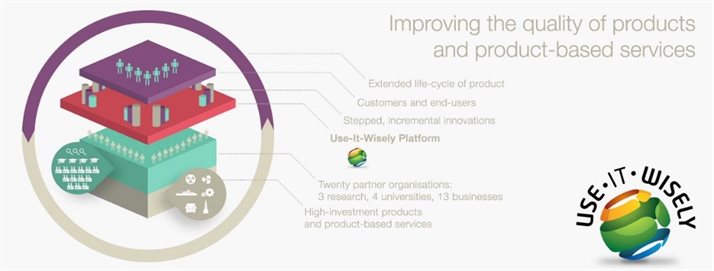
VirCult - seeks to provide virtual access to important Egyptian heritage sites using 3D laser-scanning technology to create virtual models
Title: VirCult
Funder: Tempus EU
Total value: €1 million
Start to end date: November 2012 – October 2016
Summary:
The primary objective of VirCult is to enhance Egyptian cultural heritage education by allowing students to explore highly detailed models of sites of historic significance from key periods of Egypt’s history. Some cultural and personal issues prevent students from undertaking field visits (a notable example is when a female is not permitted by her family to travel). VirCult will enhance the educational experience for these students by constructing accurate 3D models of the sites which students can explore an interact with. The use of a Virtual Environment allows not only virtual presence and experiential learning, but also the opportunity to augment the experience by linking to online libraries, resources, site plans and media to enrich learning. This project has the potential to produce a new generation of archaeologists with a deeper understanding Egypt’s cultural heritage, which is among the largest and most ancient worldwide.
HFRG members:
Project partners:
- Democritus University of Thrace (Greece)
- Universita Di Catania, Italy
- Ministry of State for Antiquities Affairs, Egypt
- Ain Shams University
- Alexandria University
- Alexandrina Bibliotheca
- La Societe Archeologique D’Alexandrie
- Damanhour University, Egypt
- Nile University, Egypt
- South Valley University, Egypt
Tempus ViRCult project
ASU-GARDS
VIRART - Virtual Reality and Associated Technologies for Learning and Rehabilitation
Project: Experiential Virtual Environments (1992)
Project: Makaton Language Teaching (1993)
Project: Health and Safety at work (1997)
Project: Life skills training for students with learning disabilities (1997-98)
In 1992, the Virtual Reality Applications Research Team (VIRART), a sub-group of HFRG, was founded to explore use of virtual reality technology for a variety of application domains. At the time there literature suggested that VR technology could provide powerful learning environments not available through other means (Bricken, 1991). In collaboration with local special schools in Nottinghamshire, most notably Shepherd School (now Oakfield School), VIRART developed a number of desktop virtual environments to explore use and utility in special education. These applications intended to support training for individuals with learning needs and communication difficulties in preparation for more independence in their everyday activities and communications in the community. A review of these projects is given in Cobb (2007). During this time, a growing VR research community was established through the conference series International Conference on Disability, Virtual Reality and associated Technologies (ICDVRAT), established by Professor Paul Sharkey at the University of Reading in 1996, to examine the benefits of using this technology in mainstream and special needs education, as well as rehabilitation and other learning environments. At the 10-year anniversary, Cobb and Sharkey published a review of all research conducted to date (Cobb and Sharkey, 2007). The 20-year anniversary conference will be held in Nottingham 5th September 2018. A key feature of the first conference was the involvement of users themselves in giving the Keynote address to describe their role in the user-centred design process. To mark the importance of user involvement in design and development of virtual rehabilitation technologies and applications, members of the original user group who presented in 1996 will again present their story at ICDVRAT2018.
HFRG members:
- Dave Brown
- Sue Cobb
- Helen Neale
- Steve Kerr
- Rick Barnes
- Richard Eastgate
- John R. Wilson
Publications:
- Cobb, SVG (2007). Virtual environments supporting learning and communication in special needs education. Topics in Language Disorders, 27 (3), 211-225.
- Cobb, SVG and Sharkey, PM. (2007). A decade of research and development in disability, virtual reality and associated technologies: review of ICDVRAT 1996-2006. International Journal of Virtual Reality, 6 (2), 51-68.
- Cobb, SVG, Brooks, T, Sharkey, PM and Merrick, J. (2006). (Eds) International Journal on Disability and Human Development, Special Issue on virtual reality technologies for disability and rehabilitation. 5 (2), April-June 2006. ISSN 1565-012X EDITORIAL: Virtual Reality and Disability, pp 95-96.
- Cobb, S.and Stanton Fraser, D (2005). Multimedia Learning in Virtual Reality. In: R. Mayer (Ed.) The Cambridge Handbook of Multimedia Learning. New York: Cambridge University Press. pp525-548.
- Cobb, S.V.G., Neale, H.R, Crosier, J.K. and Wilson, J.R. (2002). Development and Evaluation of Virtual Environments for Education. In K. Stanney (Ed.), Virtual Environment Handbook, Chapter 47, Lawrence Erlbaum. 911-936.
- Brown, D. J., Neale, H. R., Cobb, S. V. G., & Reynolds, H. (1999). Development and evaluation of the virtual city. International Journal of Virtual Reality, 3(4), 27-38.
- Brown, D.J., Cobb, S.V.G. and Eastgate, R.M. (1995). Learning in Virtual Environments (LIVE). In: Virtual Reality Applications (eds. RA Earnshaw, JA Vince and H. Jones). London: Academic Press, 245-252.
- PhD Thesis: Structured evaluation of virtual environments in special needs education. Helen Neale (2001)
Virtual RadLab - Virtual Reality for teaching radioactivity in Secondary Education
Sponsor: Particle Physics and Astronomy Research Council (PPARC)
HFRG members:
- Joanna Crosier
- Sue Cobb
- Mirabelle D’Cruz
- Richard Eastgate
- John R. Wilson
Publications:
- Crosier, J.K., Cobb, S.V. and Wilson, J.R. (2002) Key Lessons for the Design and Integration of Virtual Environments in Secondary Science, Computers and Education, 38, 77-94.
- Crosier, J.K., Cobb, S.V.G. and Wilson, J.R. (2000). Experimental comparison of virtual reality with traditional teaching methods for teaching radioactivity, Education and Information Technologies, 5(4), 329-343.
PhD Thesis: Evaluation of VR as a tool for secondary science education. Joanna Crosier (2000)
VISTRA - Developing a comprehensive platform for simulation and training of manual assembly processes in automotive industries
VISTRA is a collaborative project funded by the European Commission’s 7th Framework Programme. The project aims at the development of a comprehensive platform for simulation and training of manual assembly processes.
The VISTRA platform builds on existing enterprise data structures. Product and manufacturing data will be captured, updated, enriched and transferred into an interoperable knowledge representation. It will enable cross-disciplinary knowledge sharing between product design and production engineering, and will be used for novel applications such as the interactive, game-based training of complex manual manufacturing processes.
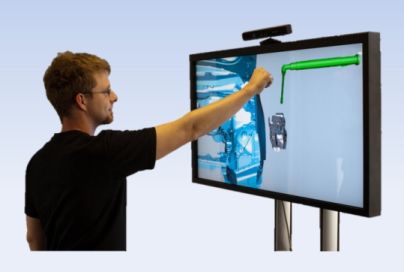
Project Number: ICT-285176
Date: From 2011-09-01 to 2014-08-31
HFRG members:
Project partners:
Project details
VR-HYPERSPACE - The innovative use of virtual reality to increase human comfort by changing the perception of self and space
Title: VR-HYPERSPACE: The innovative use of virtual and mixed reality to increase human comfort by changing the perception of self and space
Funder: European Commission Framework Programme 7 (AAT-285681)
Total value: €4,592,294.20
Start to end date: October 2011 – September 2014

Summary:
VR-HYPERSPACE was an ambitious 3-year European project (2011-2014) investigating the use of virtual reality (VR) and mixed reality (MR) to enhance passenger comfort in future aircraft in 2050 and beyond. “Positive illusions” were created with VR/MR, drawing on technology innovations and findings from neuroscience and the psychology of perception, to extend the experience of self and space. These illusions allow passengers to see themselves looking comfortable, feeling like they have more space around them in the cabin, or be in an alternative, more comfortable place, and carry out desired activities and social interaction with others.
Project partners:
- Fraunhofer Gesellschaft Zur Foerderung Der Angewandten Forschung E.V., Germany
- Teknologian Tutkimuskeskus Vtt, Finland
- Bauhaus-Universitaet Weimar, Germany
- Institute Of Communication And Computer Systems, Greece
- Universitat De Barcelona, Spain
- Max-Planck-Gesellschaft Zur Forderung Der Wissenschaften Ev, Germany
- Thales Alenia Space Italia Spa, Italy
- Airbus Defence And Space Gmbh, Germany
Key publications:
- Lewis, L., Patel, H., Cobb, S., D'cruz, M., Bues, M., Stefani, O. And Grobler, T., (2016) Distracting people from sources of discomfort in a simulated aircraft environment: Work, 54(4), 963-979
- D’Cruz M., Patel H., Lewis L., Cobb S., Bues M., Stefani O., Grobler T., Helin K., Viitaniemi J., Aromaa S., Frohlich B., Beck S., Kunert A., Kulik A., Karaseitanidis I., Psonis P., Frangakis N., Slater M., Bergstrom I., Kilteni K., Kokkinara E., Mohler B.J., Leyrer M., Soyka F., Gaia E., Tedone D., Olbert M. und Cappitelli M. (2014). VR-HYPERSPACE—The innovative use of virtual reality to increase comfort by changing the perception of self and space.IEEE Virtual Reality (VR 2014), Minneapolis, Minnesota
- D’Cruz, M., Patel, H., Lewis, L. and Cobb, S. (2014) Feedback on in-flight applications of virtual reality to enhance comfort in future aircraft. EuroVR 2014, Bremen, Germany, 8-10th December, 2014
- Frangakis, N., Karaseitanidis, G., D’Cruz, M., Patel, H., Mohler, B., Bues, M. and Helin, K. (2014) VR-HYPERSPACE Research Roadmap. Public Deliverable D6.4 of the FP7 VR-HYPERSPACE (AAT-285681) project ( www.vr-hyperspace.eu)
- Aaltonen, L., Aromaa, S., Beck, S., Bergstrom, I., D'Cruz, M., Frangakis, N., Fröhlich, B., Helin, K., Kulik, A., Kunert, A., Lewis, L., Leyrer, M., Mohler, B., Patel, H., Soyka, F., Tedone, D., Viitaniemi, J. (2014) Final user evaluation report. Public Report D5.4 of the FP7 VR-HYPERSPACE (AAT-285681) project ( www.vr-hyperspace.eu)
- D’Cruz, M. & Patel, H. (2013) VR-HYPERSPACE: Exploring new ways of enhancing comfort in future air travel using Virtual Reality (VR) and Mixed Reality (MR). Joint Virtual Reality Conference EGVE-ICAT-EuroVR, JVRC 2013, Paris, France
- Patel, H., Lewis, L., Cobb, S., D’Cruz, M, Tedone, D., Hakulinen, J. (2012) Report of current scenarios and case definition. Public Deliverable D1.1 of the FP7 VR-HYPERSPACE (AAT-285681) project ( www.vr-hyperspace.eu)
VR-Hyperspace website
European Commission CORDIS: VR-HYPERSPACE Report Summary
Inflight VR simulation video
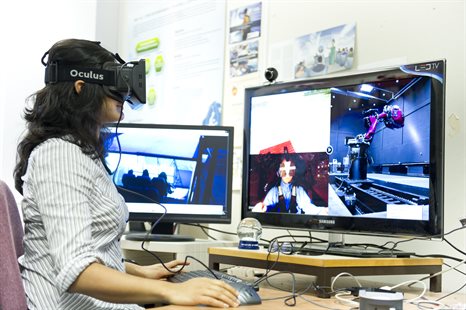
Wayward: Informatics to identify and inform best practice in out of hours secondary care
This project will investigate the use of ‘locative and tasking’ informatics to learn more about clinical behaviour in out-of-hours secondary care settings, in order to drive improvements in safety, efficiency and effectiveness. The informatics system developed by the University of Nottingham team can capture data on clinical tasks, including the type, timing and location of activities, without the need for traditional direct observation.
Further information
